Apoptosis
As one of the cellular death mechanisms, apoptosis, also known as programmed cell death, can be defined as the process of a proper death of any cell under certain or necessary conditions. Apoptosis is controlled by the interactions between several molecules and responsible for the elimination of unwanted cells from the body.
Many biochemical events and a series of morphological changes occur at the early stage and increasingly continue till the end of apoptosis process. Morphological event cascade including cytoplasmic filament aggregation, nuclear condensation, cellular fragmentation, and plasma membrane blebbing finally results in the formation of apoptotic bodies. Several biochemical changes such as protein modifications/degradations, DNA and chromatin deteriorations, and synthesis of cell surface markers form morphological process during apoptosis.
Apoptosis can be stimulated by two different pathways: (1) intrinsic pathway (or mitochondria pathway) that mainly occurs via release of cytochrome c from the mitochondria and (2) extrinsic pathway when Fas death receptor is activated by a signal coming from the outside of the cell.
Different gene families such as caspases, inhibitor of apoptosis proteins, B cell lymphoma (Bcl)-2 family, tumor necrosis factor (TNF) receptor gene superfamily, or p53 gene are involved and/or collaborate in the process of apoptosis.
Caspase family comprises conserved cysteine aspartic-specific proteases, and members of caspase family are considerably crucial in the regulation of apoptosis. There are 14 different caspases in mammals, and they are basically classified as the initiators including caspase-2, -8, -9, and -10; and the effectors including caspase-3, -6, -7, and -14; and also the cytokine activators including caspase-1, -4, -5, -11, -12, and -13. In vertebrates, caspase-dependent apoptosis occurs through two main interconnected pathways which are intrinsic and extrinsic pathways. The intrinsic or mitochondrial apoptosis pathway can be activated through various cellular stresses that lead to cytochrome c release from the mitochondria and the formation of the apoptosome, comprised of APAF1, cytochrome c, ATP, and caspase-9, resulting in the activation of caspase-9. Active caspase-9 then initiates apoptosis by cleaving and thereby activating executioner caspases. The extrinsic apoptosis pathway is activated through the binding of a ligand to a death receptor, which in turn leads, with the help of the adapter proteins (FADD/TRADD), to recruitment, dimerization, and activation of caspase-8 (or 10). Active caspase-8 (or 10) then either initiates apoptosis directly by cleaving and thereby activating executioner caspase (-3, -6, -7), or activates the intrinsic apoptotic pathway through cleavage of BID to induce efficient cell death. In a heat shock-induced death, caspase-2 induces apoptosis via cleavage of Bid.
Bcl-2 family members are divided into three subfamilies including (i) pro-survival subfamily members (Bcl-2, Bcl-xl, Bcl-W, MCL1, and BFL1/A1), (ii) BH3-only subfamily members (Bad, Bim, Noxa, and Puma9), and (iii) pro-apoptotic mediator subfamily members (Bax and Bak). Following activation of the intrinsic pathway by cellular stress, pro‑apoptotic BCL‑2 homology 3 (BH3)‑only proteins inhibit the anti‑apoptotic proteins Bcl‑2, Bcl-xl, Bcl‑W and MCL1. The subsequent activation and oligomerization of the Bak and Bax result in mitochondrial outer membrane permeabilization (MOMP). This results in the release of cytochrome c and SMAC from the mitochondria. Cytochrome c forms a complex with caspase-9 and APAF1, which leads to the activation of caspase-9. Caspase-9 then activates caspase-3 and caspase-7, resulting in cell death. Inhibition of this process by anti‑apoptotic Bcl‑2 proteins occurs via sequestration of pro‑apoptotic proteins through binding to their BH3 motifs.
One of the most important ways of triggering apoptosis is mediated through death receptors (DRs), which are classified in TNF superfamily. There exist six DRs: DR1 (also called TNFR1); DR2 (also called Fas); DR3, to which VEGI binds; DR4 and DR5, to which TRAIL binds; and DR6, no ligand has yet been identified that binds to DR6. The induction of apoptosis by TNF ligands is initiated by binding to their specific DRs, such as TNFα/TNFR1, FasL /Fas (CD95, DR2), TRAIL (Apo2L)/DR4 (TRAIL-R1) or DR5 (TRAIL-R2). When TNF-α binds to TNFR1, it recruits a protein called TNFR-associated death domain (TRADD) through its death domain (DD). TRADD then recruits a protein called Fas-associated protein with death domain (FADD), which then sequentially activates caspase-8 and caspase-3, and thus apoptosis. Alternatively, TNF-α can activate mitochondria to sequentially release ROS, cytochrome c, and Bax, leading to activation of caspase-9 and caspase-3 and thus apoptosis. Some of the miRNAs can inhibit apoptosis by targeting the death-receptor pathway including miR-21, miR-24, and miR-200c.
p53 has the ability to activate intrinsic and extrinsic pathways of apoptosis by inducing transcription of several proteins like Puma, Bid, Bax, TRAIL-R2, and CD95.
Some inhibitors of apoptosis proteins (IAPs) can inhibit apoptosis indirectly (such as cIAP1/BIRC2, cIAP2/BIRC3) or inhibit caspase directly, such as XIAP/BIRC4 (inhibits caspase-3, -7, -9), and Bruce/BIRC6 (inhibits caspase-3, -6, -7, -8, -9).
Any alterations or abnormalities occurring in apoptotic processes contribute to development of human diseases and malignancies especially cancer.
References:
1.Yağmur Kiraz, Aysun Adan, Melis Kartal Yandim, et al. Major apoptotic mechanisms and genes involved in apoptosis[J]. Tumor Biology, 2016, 37(7):8471.
2.Aggarwal B B, Gupta S C, Kim J H. Historical perspectives on tumor necrosis factor and its superfamily: 25 years later, a golden journey.[J]. Blood, 2012, 119(3):651.
3.Ashkenazi A, Fairbrother W J, Leverson J D, et al. From basic apoptosis discoveries to advanced selective BCL-2 family inhibitors[J]. Nature Reviews Drug Discovery, 2017.
4.McIlwain D R, Berger T, Mak T W. Caspase functions in cell death and disease[J]. Cold Spring Harbor perspectives in biology, 2013, 5(4): a008656.
5.Ola M S, Nawaz M, Ahsan H. Role of Bcl-2 family proteins and caspases in the regulation of apoptosis[J]. Molecular and cellular biochemistry, 2011, 351(1-2): 41-58.
What is Apoptosis? The Apoptotic Pathways and the Caspase Cascade
Ziele für Apoptosis
- Pyroptosis(15)
- Caspase(77)
- 14.3.3 Proteins(3)
- Apoptosis Inducers(71)
- Bax(15)
- Bcl-2 Family(136)
- Bcl-xL(13)
- c-RET(15)
- IAP(32)
- KEAP1-Nrf2(73)
- MDM2(21)
- p53(137)
- PC-PLC(6)
- PKD(8)
- RasGAP (Ras- P21)(2)
- Survivin(8)
- Thymidylate Synthase(12)
- TNF-α(141)
- Other Apoptosis(1144)
- Apoptosis Detection(0)
- Caspase Substrate(0)
- APC(6)
- PD-1/PD-L1 interaction(60)
- ASK1(4)
- PAR4(2)
- RIP kinase(47)
- FKBP(22)
Produkte für Apoptosis
- Bestell-Nr. Artikelname Informationen
-
GC33043
EL-102
EL-102 ist ein Hypoxie-induzierter Faktor 1 (Hif1α)-Inhibitor. EL-102 induziert Apoptose, hemmt die Tubulin-Polymerisation und zeigt AktivitÄten gegen Prostatakrebs. EL-102 kann fÜr die Krebsforschung eingesetzt werden.
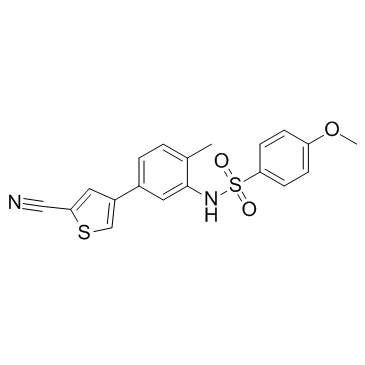
-
GC13885
Elesclomol (STA-4783)
An apoptosis inducer
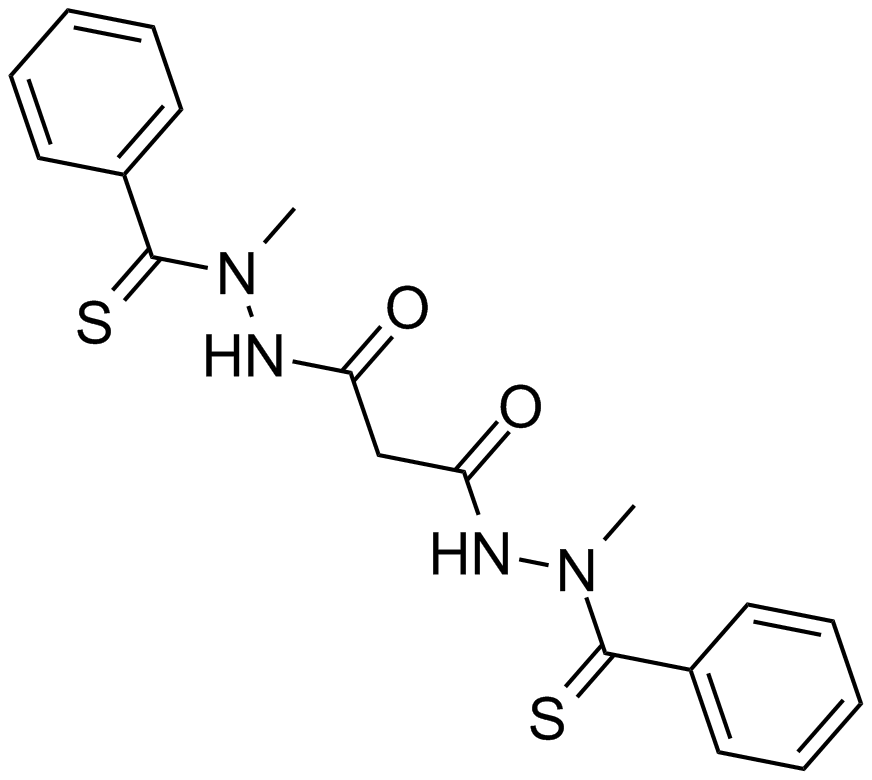
-
GC16827
ELR510444
ELR510444 ist ein neuartiger Disruptor fÜr Mikrotubuli; hemmt die MDA-MB-231-Zellproliferation mit IC50 von 30,9 nM; kein Substrat fÜr den P-Glykoprotein-Medikamententransporter und behÄlt seine AktivitÄt in βIII-Tubulin-Überexprimierenden Zelllinien bei.
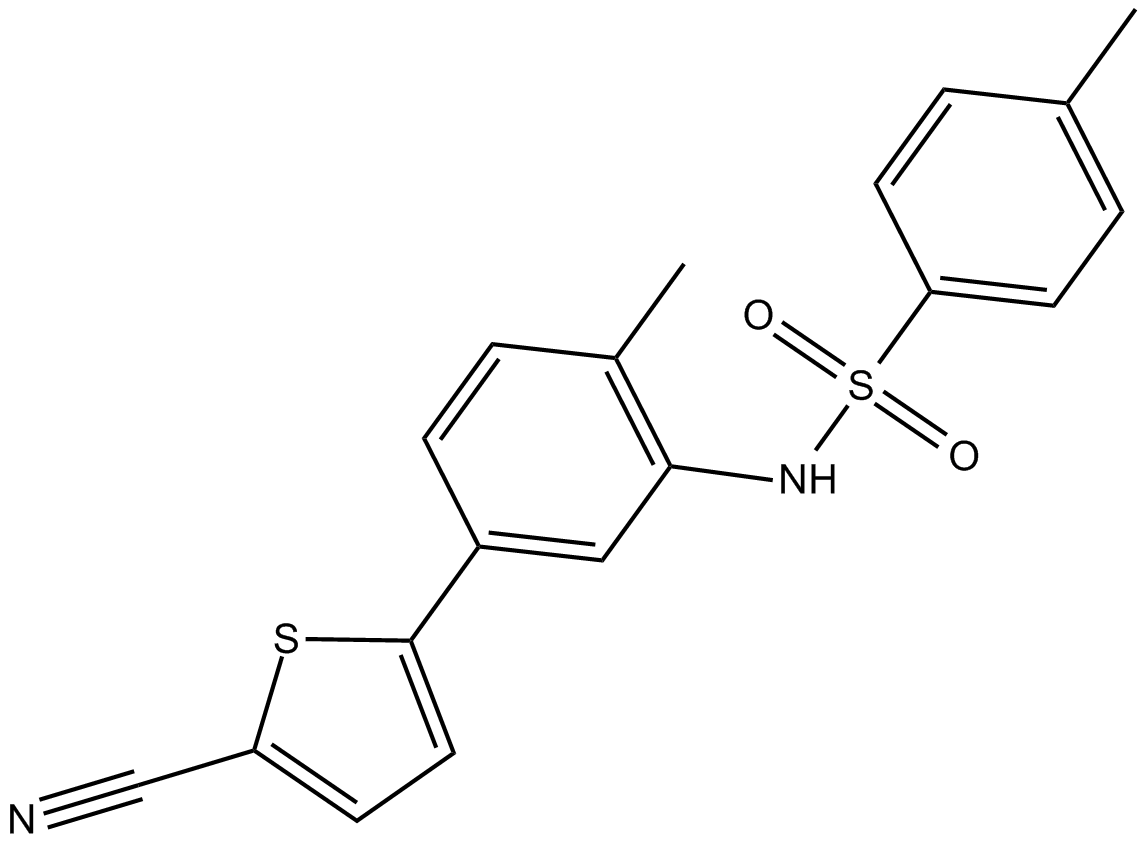
-
GC48434
Elsinochrome A
A fungal metabolite

-
GC13163
Embelin
A benzoquinone with diverse biological activities
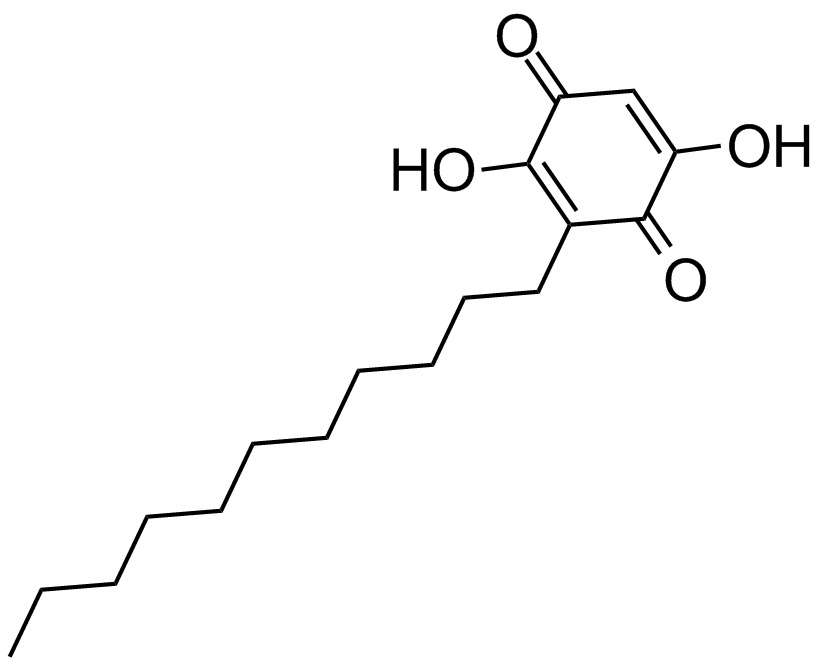
-
GC35980
Emricasan
Emricasan (PF 03491390) ist ein oral wirksamer und irreversibler Pan-Caspase-Inhibitor.
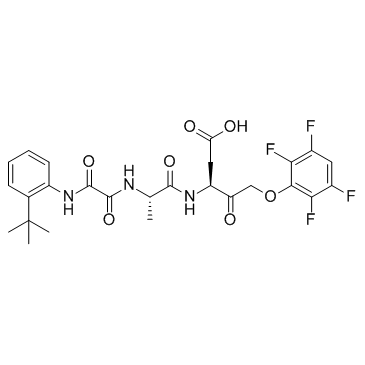
-
GC16519
ENMD-2076
A multi-kinase inhibitor
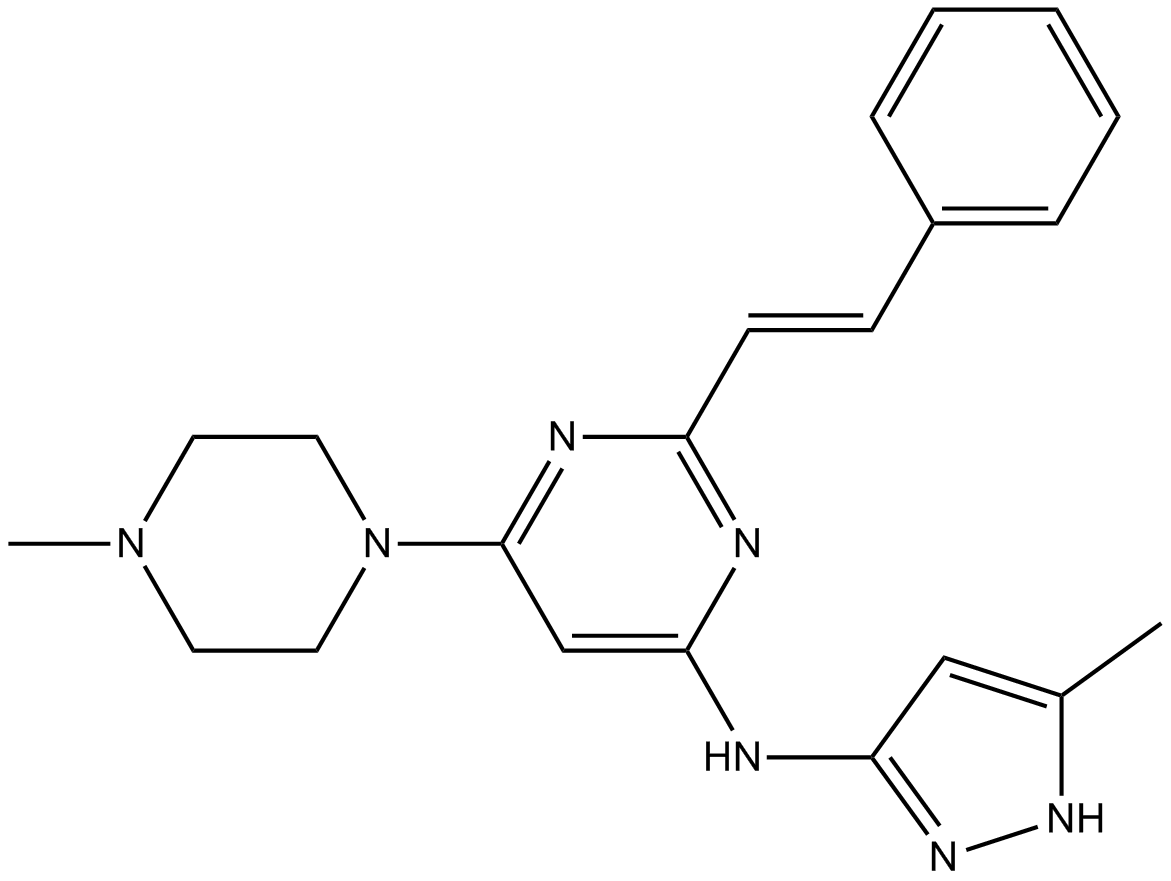
-
GC43610
Enniatin A1
Aus Fusarium-Mykotoxinen isoliertes Enniatin A1 ist ein zyklisches Hexadepsipeptid, das aus alternierenden D-α-HydroxyisovaleriansÄuren und N-Methyl-L-AminosÄuren besteht. Enniatin A1 besitzt antikarzinogene Eigenschaften durch Induktion von Apoptose und Unterbrechung des ERK-Signalwegs. Enniatin A1 hemmt ACAT mit einem IC50 von 49 μM in Rattenlebermikrosomen.

-
GC16823
Enniatin Complex
Der Enniatin-Komplex ist eine Mischung aus Cyclohexadepsipeptiden, die grÖßtenteils aus Fusarium-Pilzarten isoliert wurden und ionophorische, antibiotische und in vitro hypolipidÄmische Eigenschaften aufweisen.
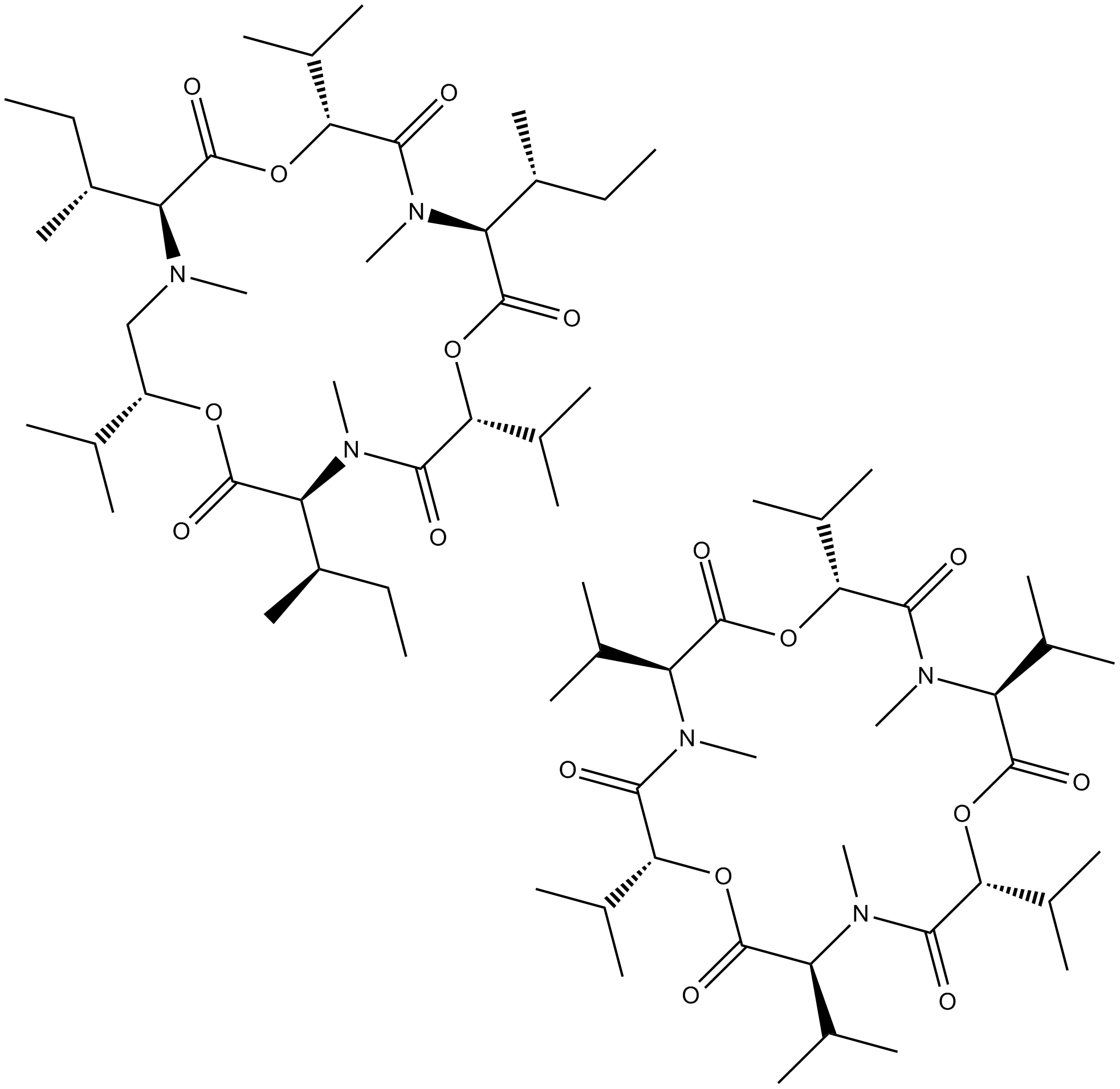
-
GC11625
Entinostat (MS-275,SNDX-275)
A histone deacetylase inhibitor
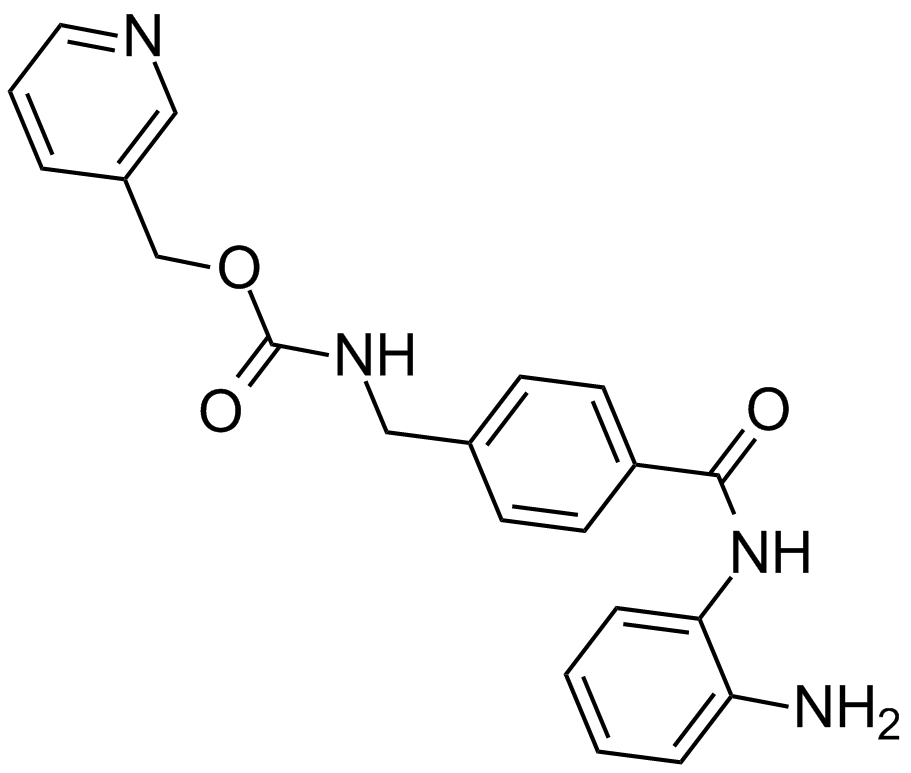
-
GC66344
Envafolimab
Envafolimab (ASC 22; KN 035) ist ein rekombinantes Protein eines humanisierten EinzeldomÄnen-AntikÖrpers gegen PD-L1. Envafolimab entsteht durch Fusion der Anti-PD-L1-DomÄne mit dem Fc-Fragment des humanen IgG1-AntikÖrpers. Envafolimab blockiert die Wechselwirkung zwischen PD-L1 und PD-1 mit einem IC50-Wert von 5,25 nm. Envafolimab zeigt AntitumoraktivitÄt. Envafolimab hat das Potenzial fÜr die Erforschung solider Tumore.

-
GC11499
Enzastaurin (LY317615)
Enzastaurin (LY317615) (LY317615) ist ein potenter und selektiver PKCβ Inhibitor mit einem IC50 von 6 nM, der eine 6- bis 20-fache SelektivitÄt gegenÜber PKC&7#945 zeigt;, PKC&7#947; und PKCε.
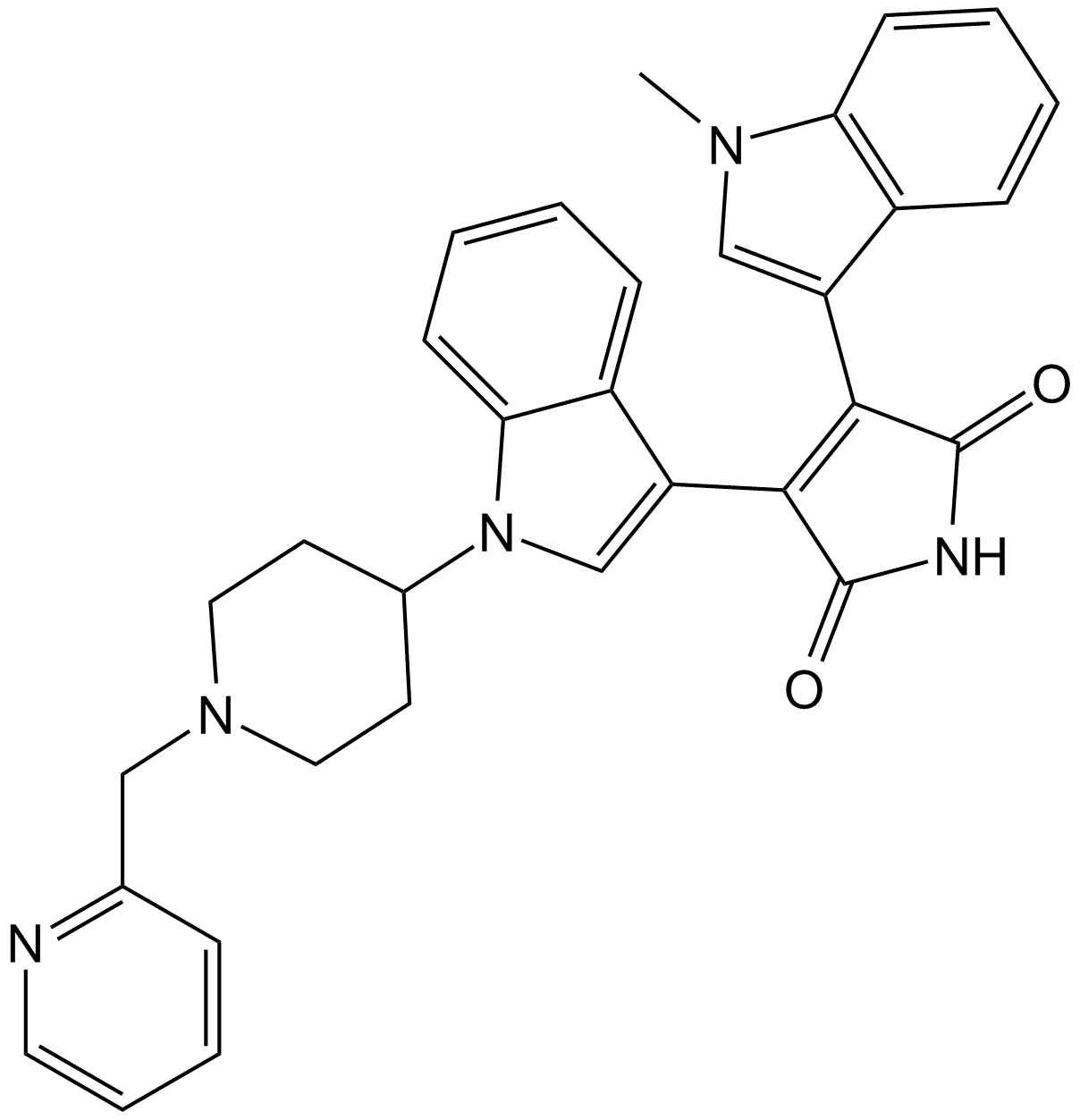
-
GC31390
EP1013 (F1013)
EP1013 (F1013) (F1013) ist ein Breitband-Caspase-selektiver Inhibitor, der in der Erforschung von Typ-1-Diabetes eingesetzt wird.
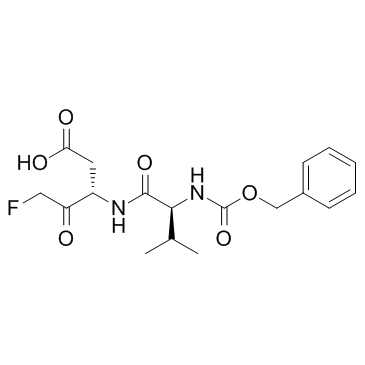
-
GC11834
Epibrassinolide
Epibrassinolid (24-Epibrassinolid) ist ein allgegenwÄrtig vorkommendes Pflanzenwachstumshormon, das ein großes Potenzial zur Linderung von Schwermetall- und Pestizidstress in Pflanzen aufweist. Epibrassinolid ist ein potenzieller Apoptoseinduktor in verschiedenen Krebszellen, ohne das Wachstum von Nicht-Tumorzellen zu beeintrÄchtigen.
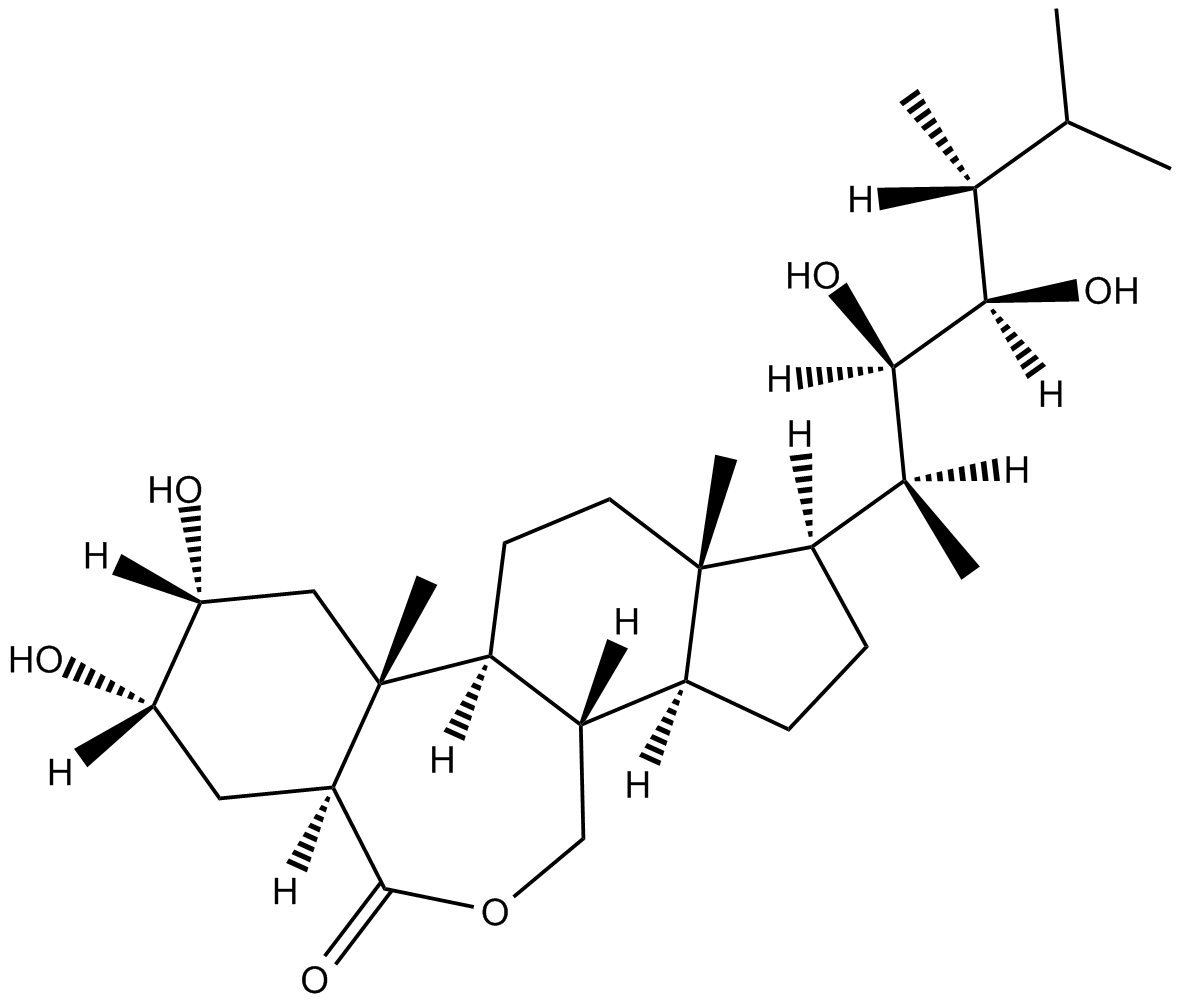
-
GC35997
Epirubicin
Epirubicin (4'-Epidoxorubicin), ein halbsynthetisches L-Arabino-Derivat von Doxorubicin, hat ein antineoplastisches Mittel, indem es die Topoisomerase hemmt. Epirubicin hemmt die DNA- und RNA-Synthese. Epirubicin ist ein Inhibitor des Forkhead-Box-Proteins p3 (Foxp3) und hemmt die regulatorische T-Zell-AktivitÄt.
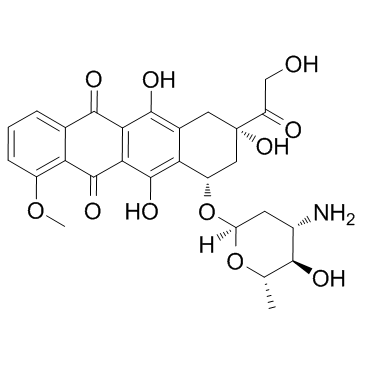
-
GC11202
Epothilone A
Epothilon A ist ein kompetitiver Inhibitor der Bindung von [3H]-Paclitaxel an Tubulinpolymere mit einem Ki von 0,6-1,4 μM.
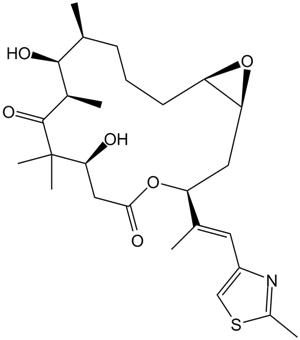
-
GC17240
Epothilone B (EPO906, Patupilone)
Epothilone B (EPO906, Patupilone) ist ein Mikrotubuli-Stabilisator mit einem Ki von 0,71&7#956; M.
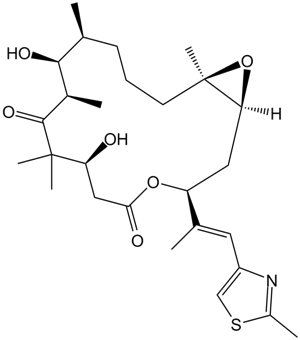
-
GC13383
EPZ004777
A potent inhibitor of DOT1L
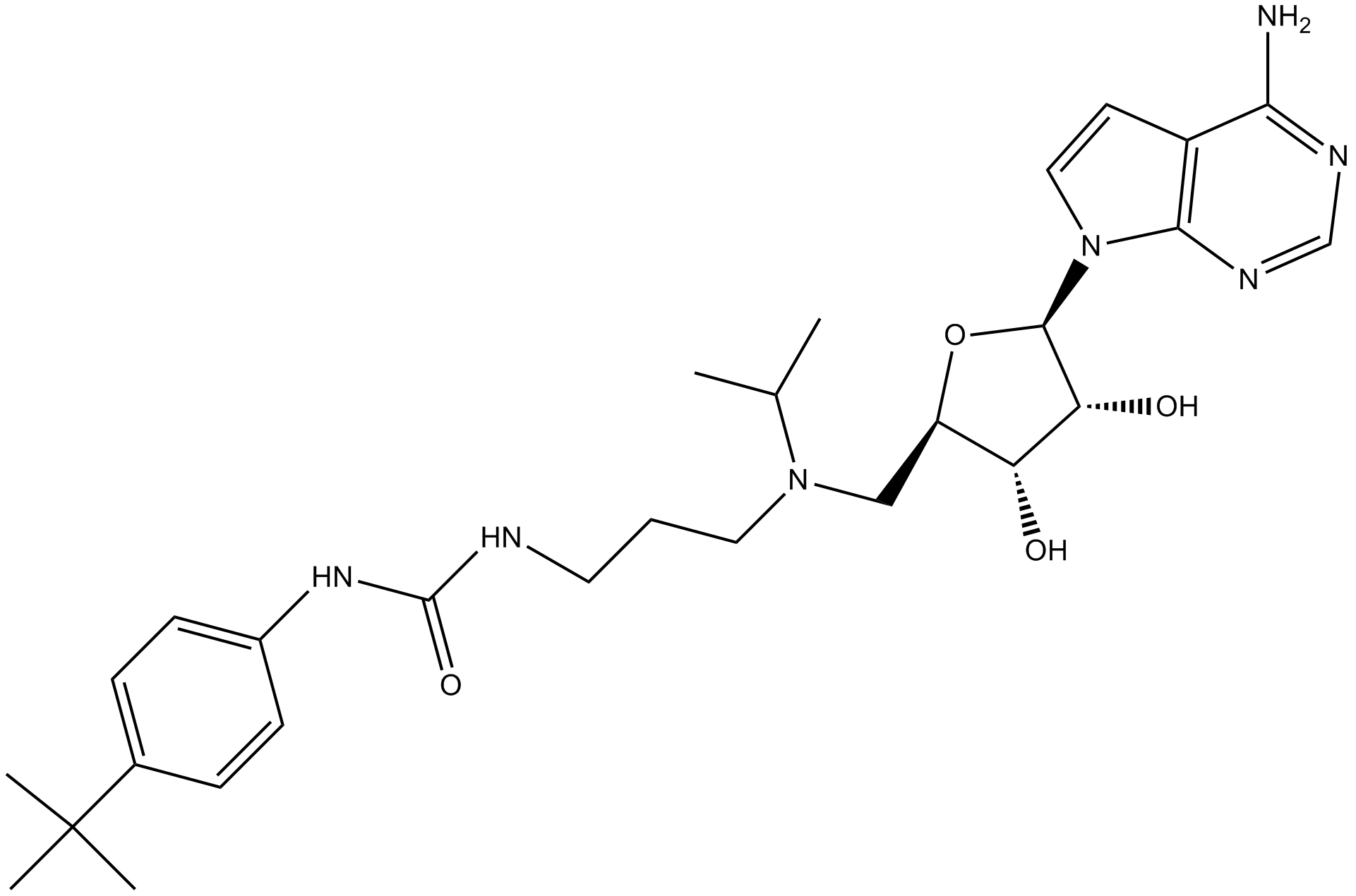
-
GC10389
ERB 041
ERB 041 (ERB-041) ist ein potenter und selektiver Östrogenrezeptor (ER) β Agonist mit IC50-Werten von 5,4, 3,1 und 3,7 nM fÜr Mensch, Ratte und Maus ERβ ERB 041 zeigt >200-fache SelektivitÄt fÜr ERβ Über ERα. ERB 041 ist ein wirksames chemoprÄventives Hautkrebsmittel, das durch DÄmpfung des WNT/β-Catenin-Signalwegs wirkt. ERB 041 induziert Eierstockkrebs-Apoptose.
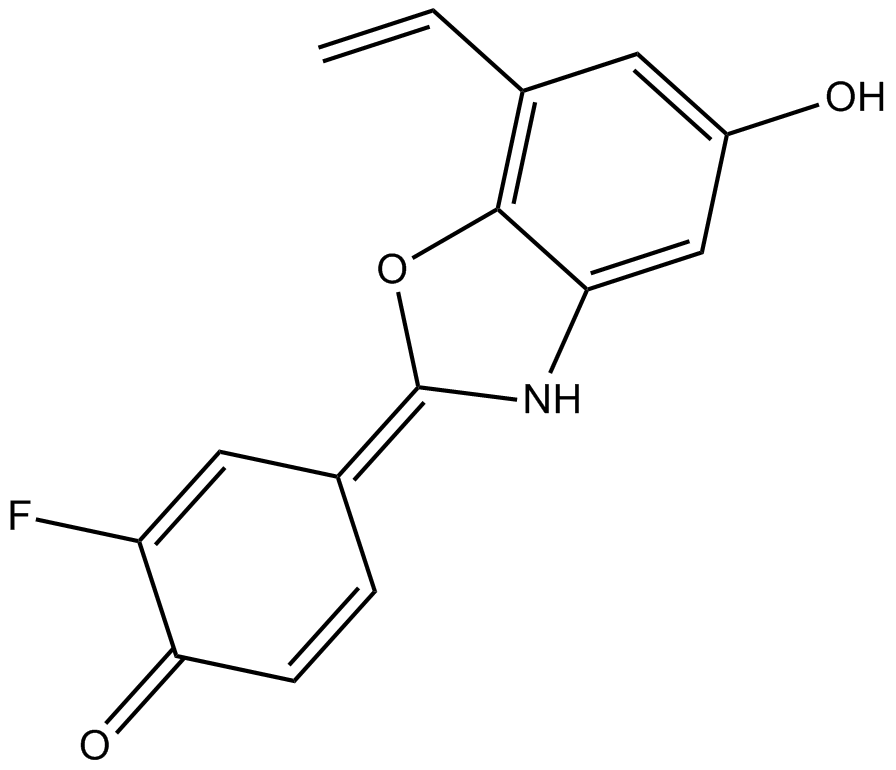
-
GC52516
Erbstatin
A tyrosine kinase inhibitor

-
GC19142
Erdafitinib
Erdafitinib (JNJ-42756493) ist ein potenter und oral verfÜgbarer Inhibitor der FGFR-Familie; hemmt FGFR1/2/3/4 mit IC50s von 1,2, 2,5, 3,0 bzw. 5,7 nM.
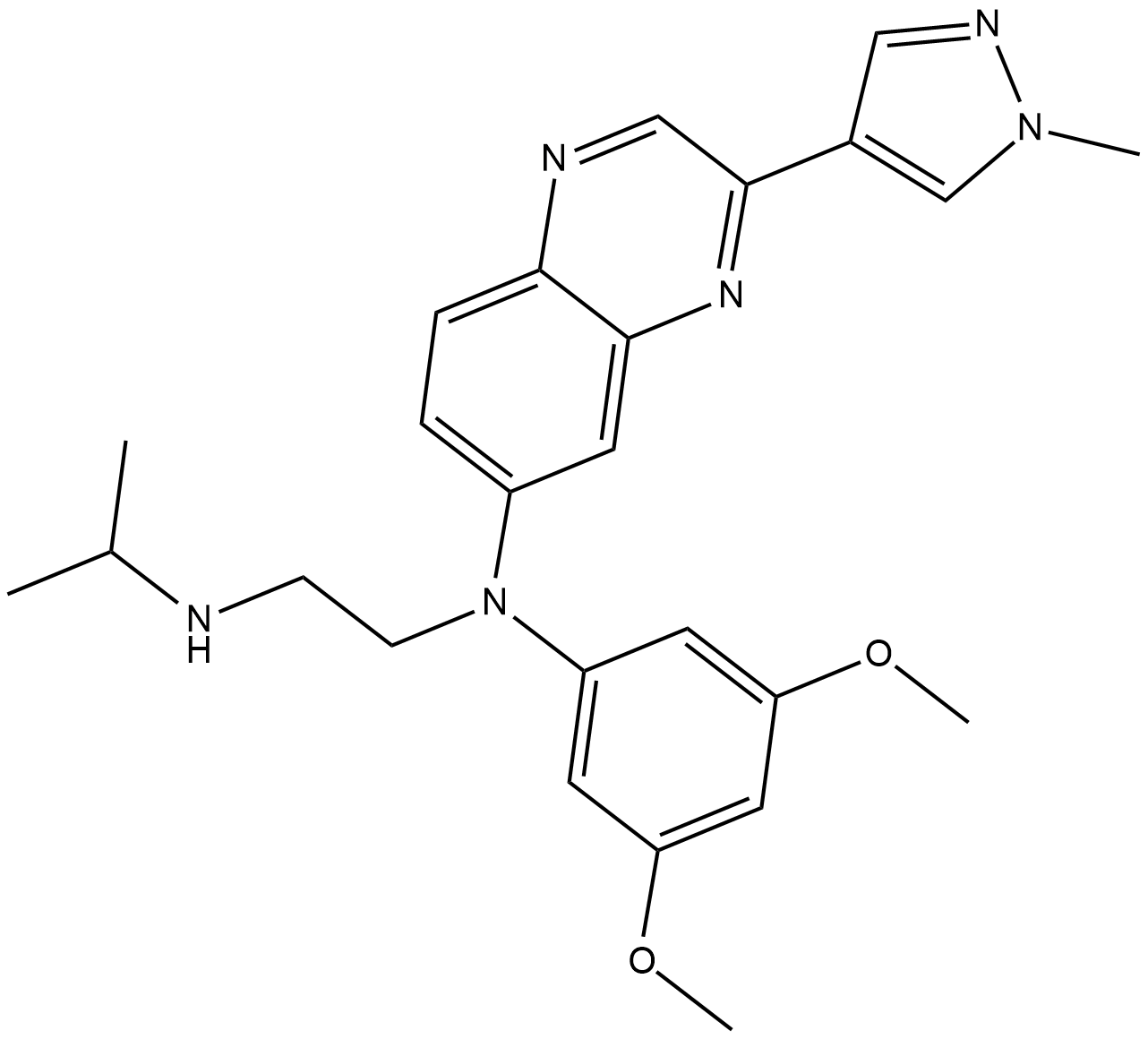
-
GC63845
Eribulin-d3 mesylate
Eribulin-d3-Mesylat ist ein Deuterium-markiertes Eribulin-Mesylat. Eribulinmesylat ist ein Wirkstoff, der auf Mikrotubuli abzielt und in der Krebsforschung eingesetzt wird.
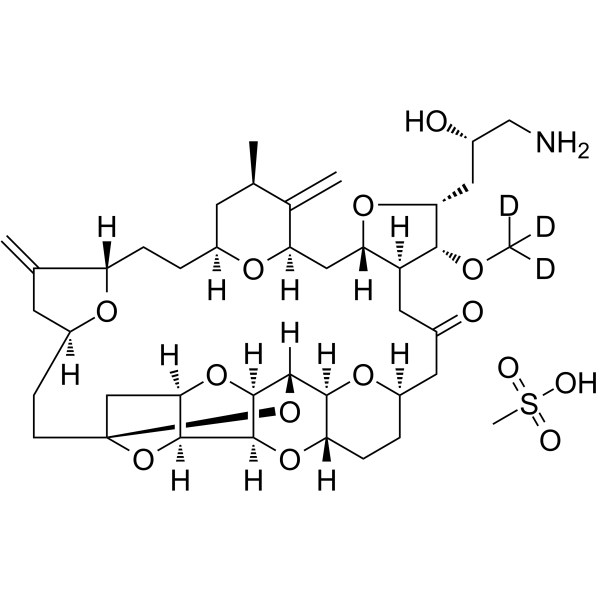
-
GC60153
Eriocalyxin B
Eriocalyxin B ist ein ent-Kaurene-Diterpenoid, das aus dem chinesischen Kraut Isodon eriocalyx isoliert wurde.
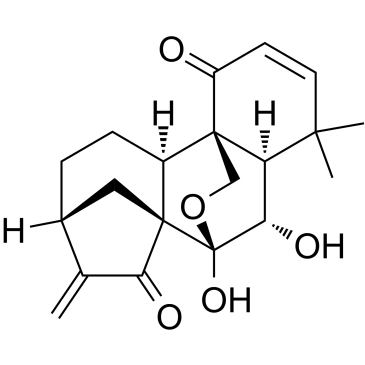
-
GC38181
Eriocitrin
Eriocitrin ist ein aus Zitrone isoliertes Flavonoid, das ein starkes Antioxidans ist. Eriocitrin kÖnnte die Proliferation hepatozellulÄrer Karzinomzelllinien hemmen, indem es den Zellzyklus in der S-Phase durch Hochregulierung von p53, Cyclin A, Cyclin D3 und CDK6 anhÄlt. Eriocitrin lÖst Apoptose aus, indem es den intrinsischen Signalweg der Mitochondrien aktiviert.
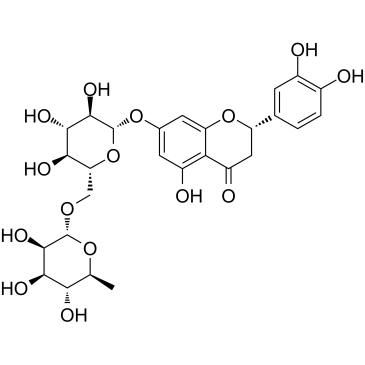
-
GN10470
Eriodictyol
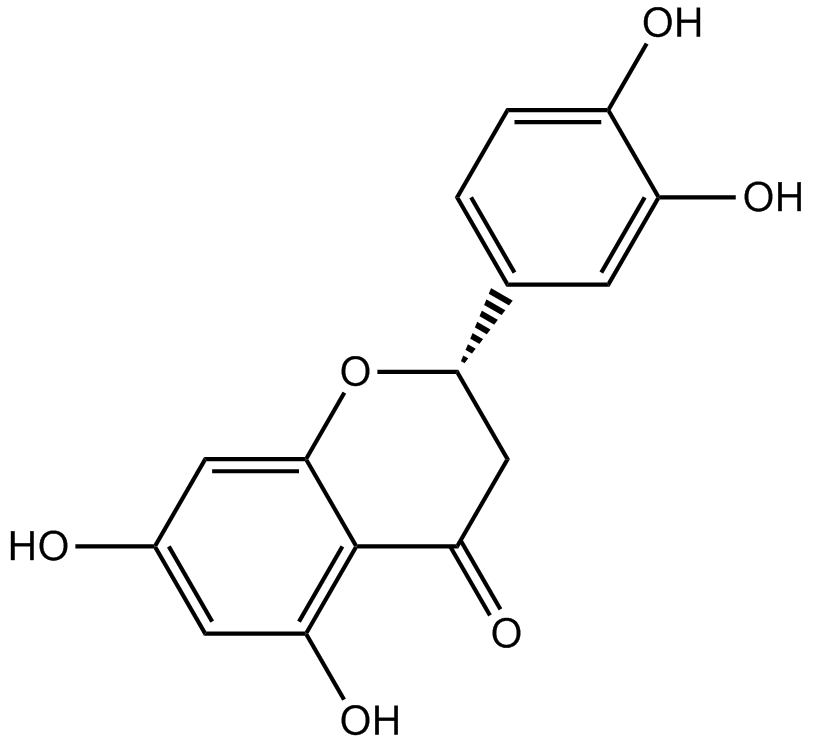
-
GC62957
Eriodictyol-7-O-glucoside
Eriodictyol-7-O-Glucosid (Eriodictyol 7-O-β-D-Glucosid), ein Flavonoid, ist ein starker FÄnger freier Radikale.
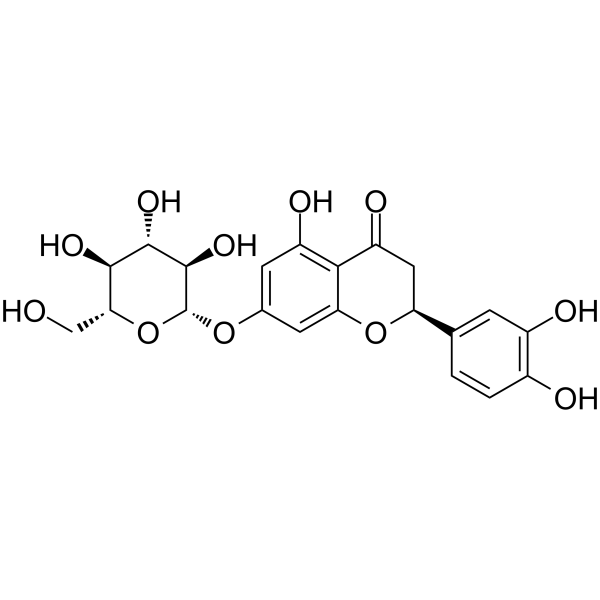
-
GC38447
Eriosematin
Eriosematin ist eine Verbindung aus den Wurzeln von Flemingia philippinensis mit antiproliferativer AktivitÄt und Apoptose-induzierender Eigenschaft.
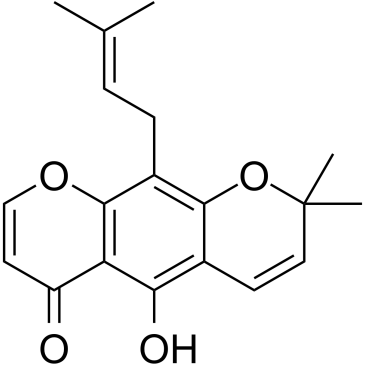
-
GC43625
Erucin
Erucin (ERU) ist ein Isothiocyanat, das besonders hÄufig in Rucola vorkommt.

-
GC11935
Escin
Escin, eine natÜrliche Verbindung von Triterpenoid-Saponinen, isoliert aus Samen der Rosskastanie (Aesculus hippocastanum), kann als vasoprotektives, entzÜndungshemmendes, antiÖdematÖses und antinozizeptives Mittel verwendet werden.
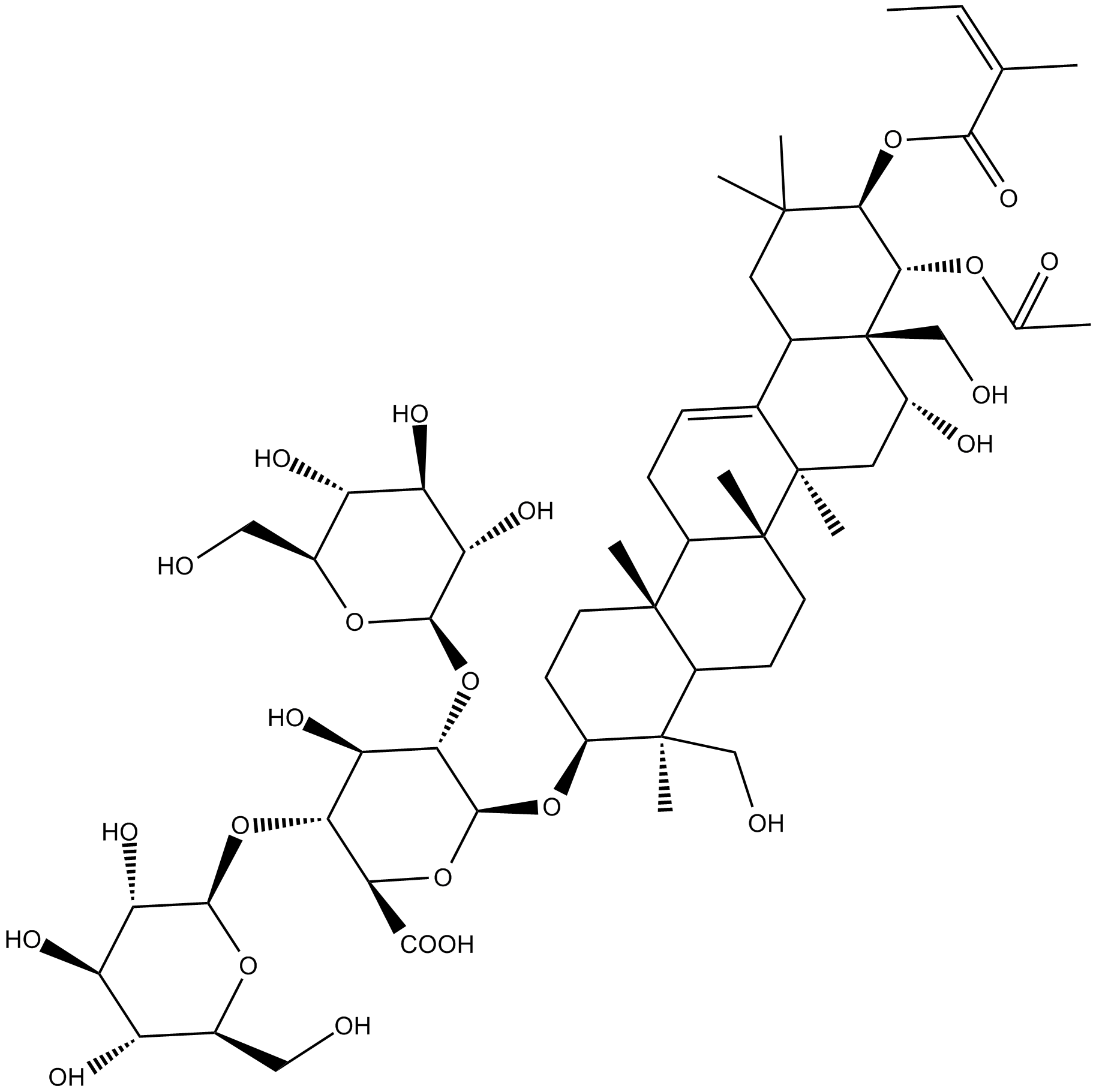
-
GC34579
Etanercept
Etanercept, ein dimeres Fusionsprotein, das TNF bindet, wirkt als TNF-Inhibitor.
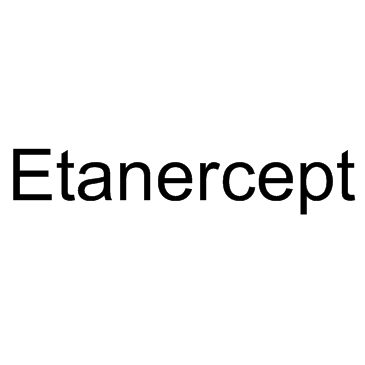
-
GC38083
Ethoxysanguinarine
Ethoxysanguinarin ist ein Benzophenanthridinalkaloid-Naturstoff, der hauptsÄchlich in Macleaya Cordata vorkommt. Ethoxysanguinarin ist ein Inhibitor der Proteinphosphatase 2A (CIP2A). Ethoxysanguinarin induziert Zellapoptose und hemmt das Wachstum von Darmkrebszellen.
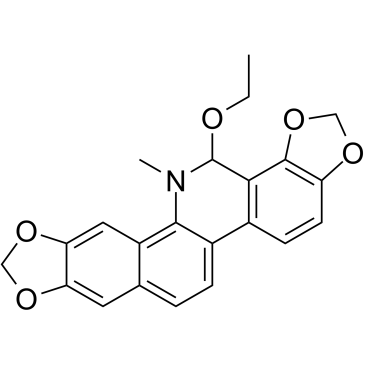
-
GC61669
Ethyl 3,4-dihydroxybenzoate
Ethyl 3,4-Dihydroxybenzoat (Ethyl Protocatechuate), ein Antioxidans, ist ein Prolyl-Hydroxylase-Hemmer, der in der Testa von Erdnusssamen vorkommt.
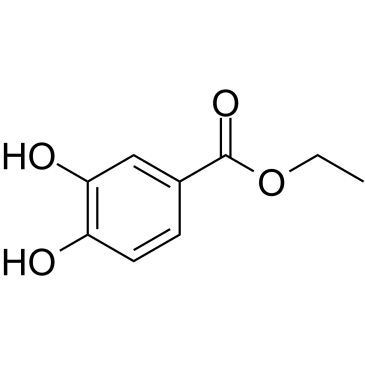
-
GC60824
Ethylene dimethanesulfonate
Ethylendimethansulfonat ist ein mild alkylierender, nichtflÜchtiger MethansulfonsÄurediester von Ethylenglycol.
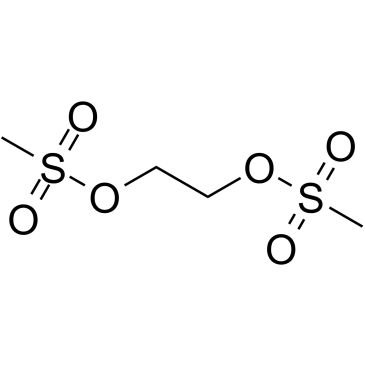
-
GC12105
Etidronate
Etidronat (Etidronate) ist ein oral und intravenÖs wirksames Bisphosphonat.
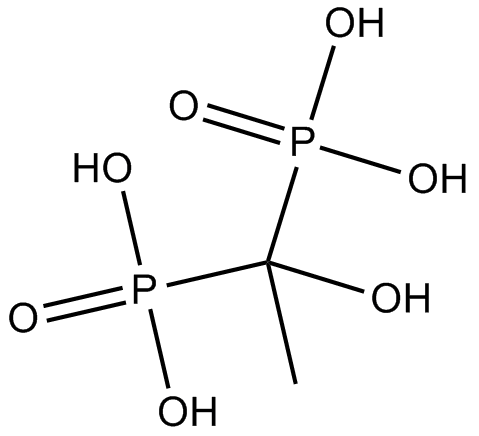
-
GC15617
Etoposide
Topo-II-Inhibitor
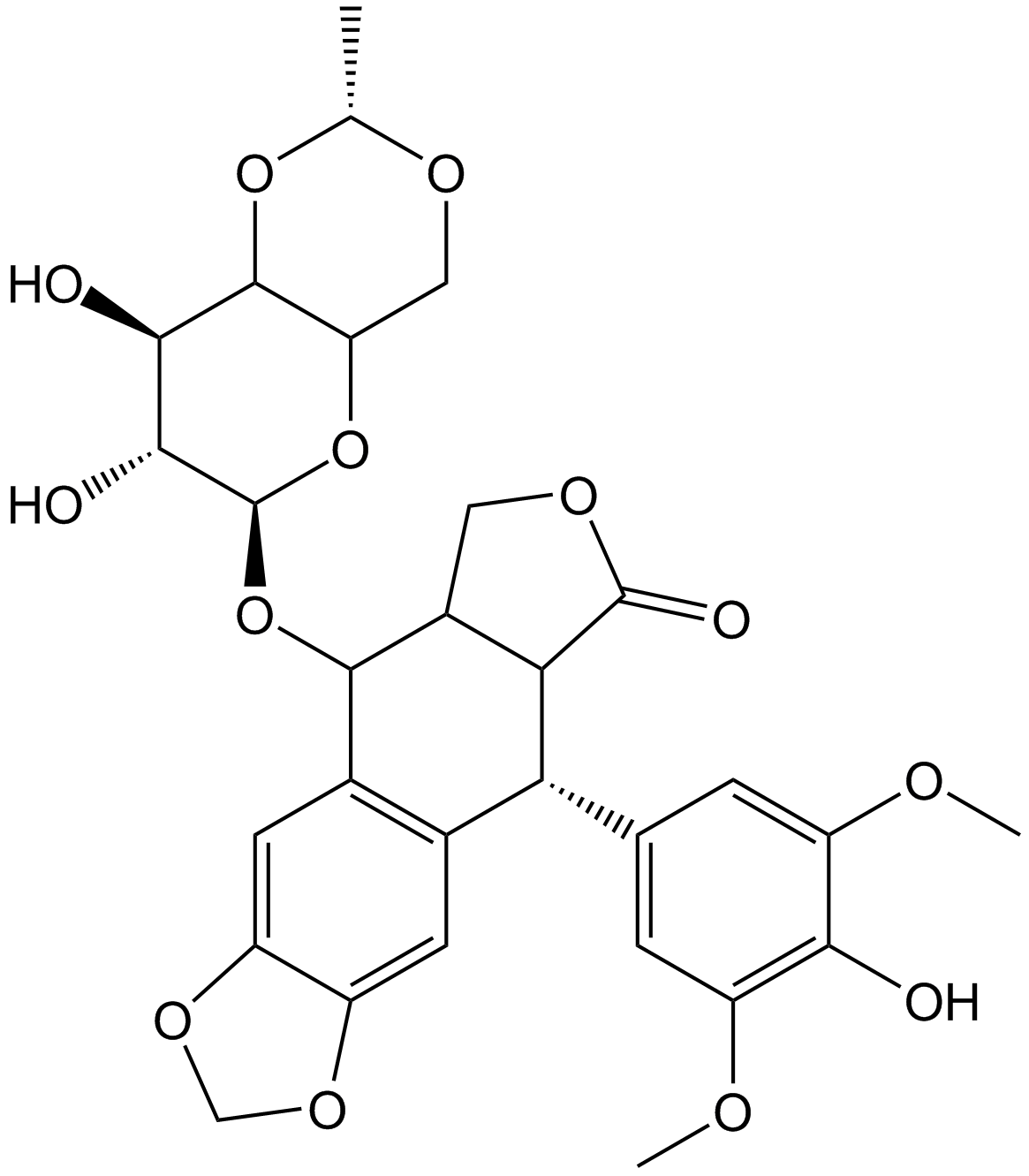
-
GC60826
Etoposide phosphate
Etoposidphosphat (BMY-40481) ist ein wirksames Chemotherapeutikum gegen Krebs und ein selektiver Topoisomerase-II-Hemmer, um die Religation von DNA-StrÄngen zu verhindern.
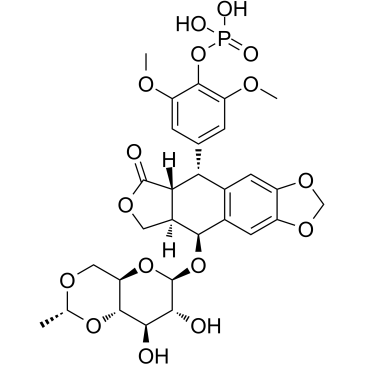
-
GC10855
Etretinate
Etretinat (Ro 10-9359) ist ein Retinoid der zweiten Generation, das das Potenzial zur Behandlung schwerer Psoriasis hat.
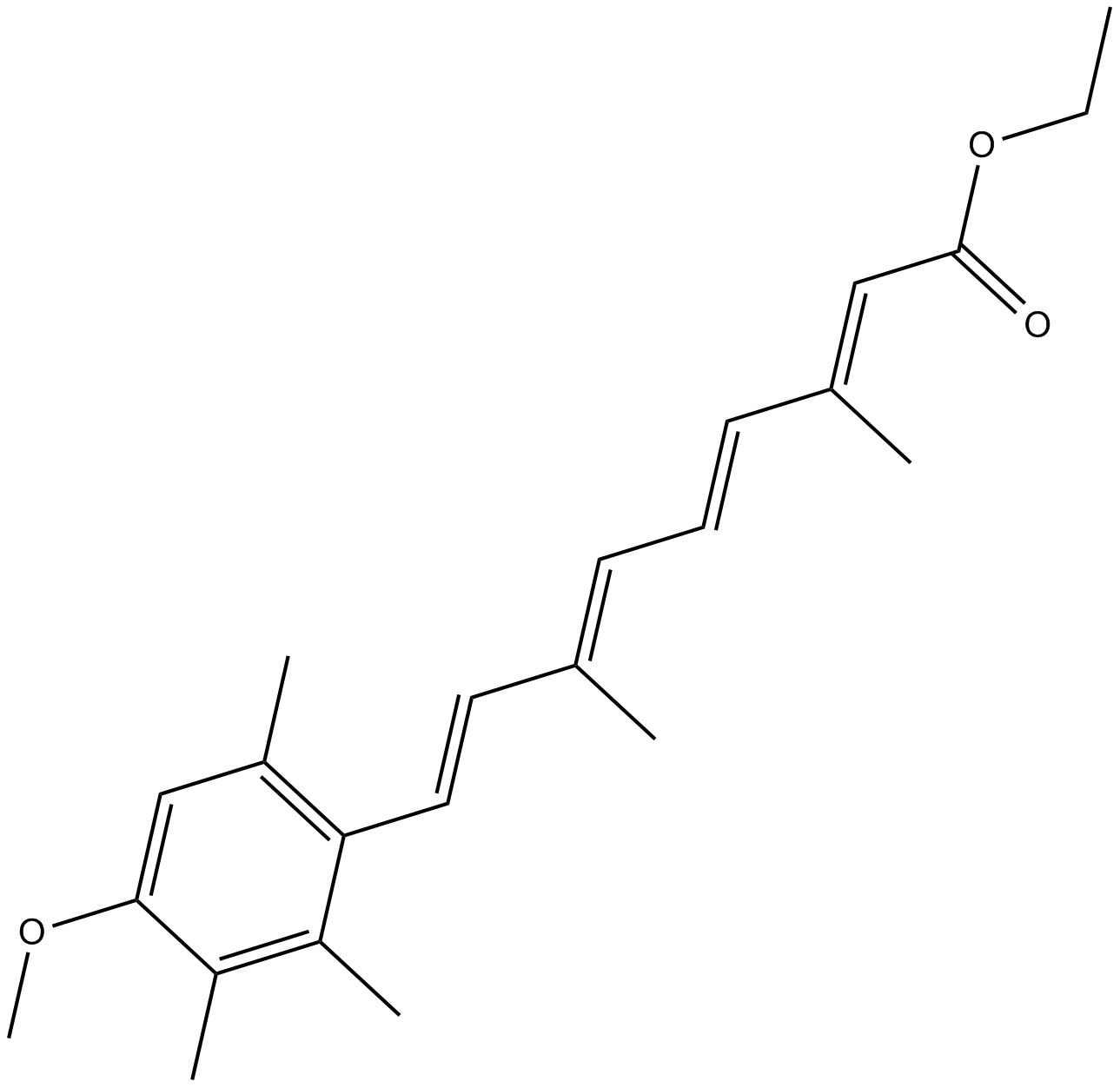
-
GC30910
Eucalyptol (1,8-Cineole)
A bicyclic monoterpene with diverse biological activities
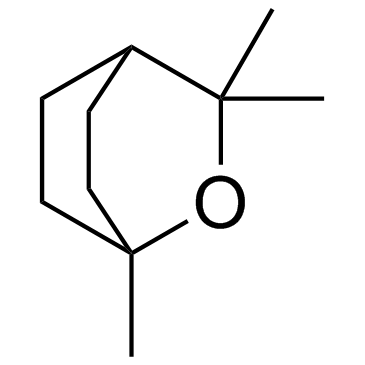
-
GC16517
Eugenol
Eugenol ist ein Ätherisches Öl, das in Nelken mit antibakterieller, anthelmintischer und antioxidativer Wirkung vorkommt.
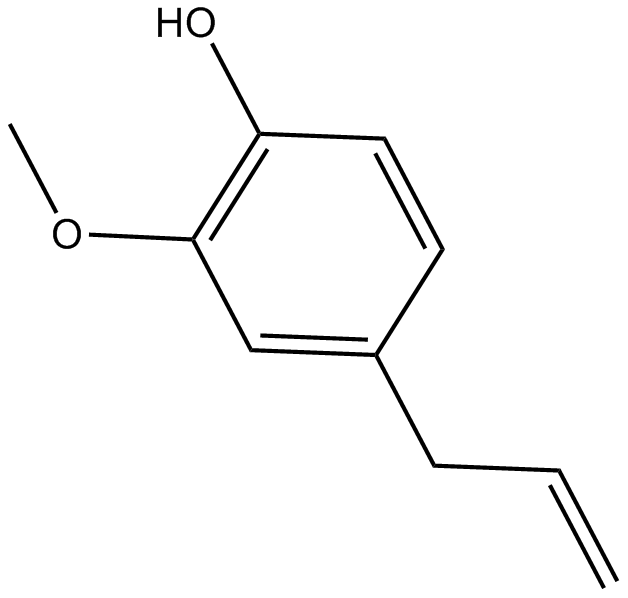
-
GC43643
Eupenifeldin
Eupenifeldin ist ein pentazyklisches Bistropolon, das aus Kulturen von Eupenicillium brefeldianum ATCC 74184 isoliert wurde. Eupenifeldin ist zytotoxisch gegenÜber der HCT-116-Zelllinie. Eupenifeldin hat das Potenzial fÜr die Erforschung von LeukÄmie.

-
GC38165
Euphorbia Factor L1
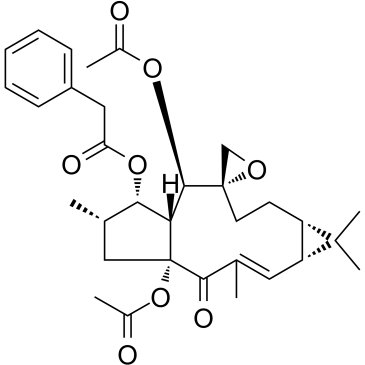
-
GC60157
Euphorbia Factor L2
Euphorbia-Faktor L2, ein Lathyran-Diterpenoid, das aus Kapern-Euphorbien-Samen (den Samen von Euphorbia lathyris L.) isoliert wurde, wird traditionell zur Behandlung von Krebs eingesetzt. Euphorbia-Faktor L2 zeigt eine starke ZytotoxizitÄt und induziert Apoptose Über einen mitochondrialen Weg.
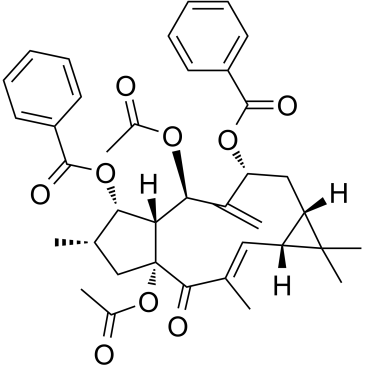
-
GC38392
Euscaphic acid
EuscaphinsÄure, ein DNA-Polymerase-Inhibitor, ist ein Triterpen aus der Wurzel von R. alceaefolius Poir. Euscaphic hemmt die KÄlber-DNA-Polymerase α (pol α) und die Ratten-DNA-Polymerase β (pol β) mit IC50-Werten von 61 und 108 μM. EuscaphinsÄure induziert Apoptose.
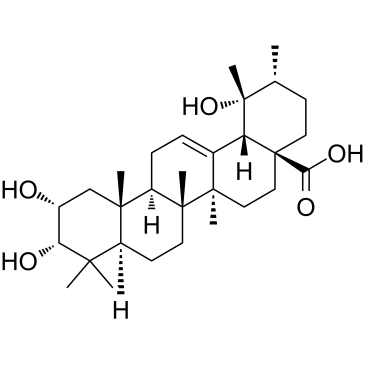
-
GC13601
Everolimus (RAD001)
Ein Rapamycin-Derivat
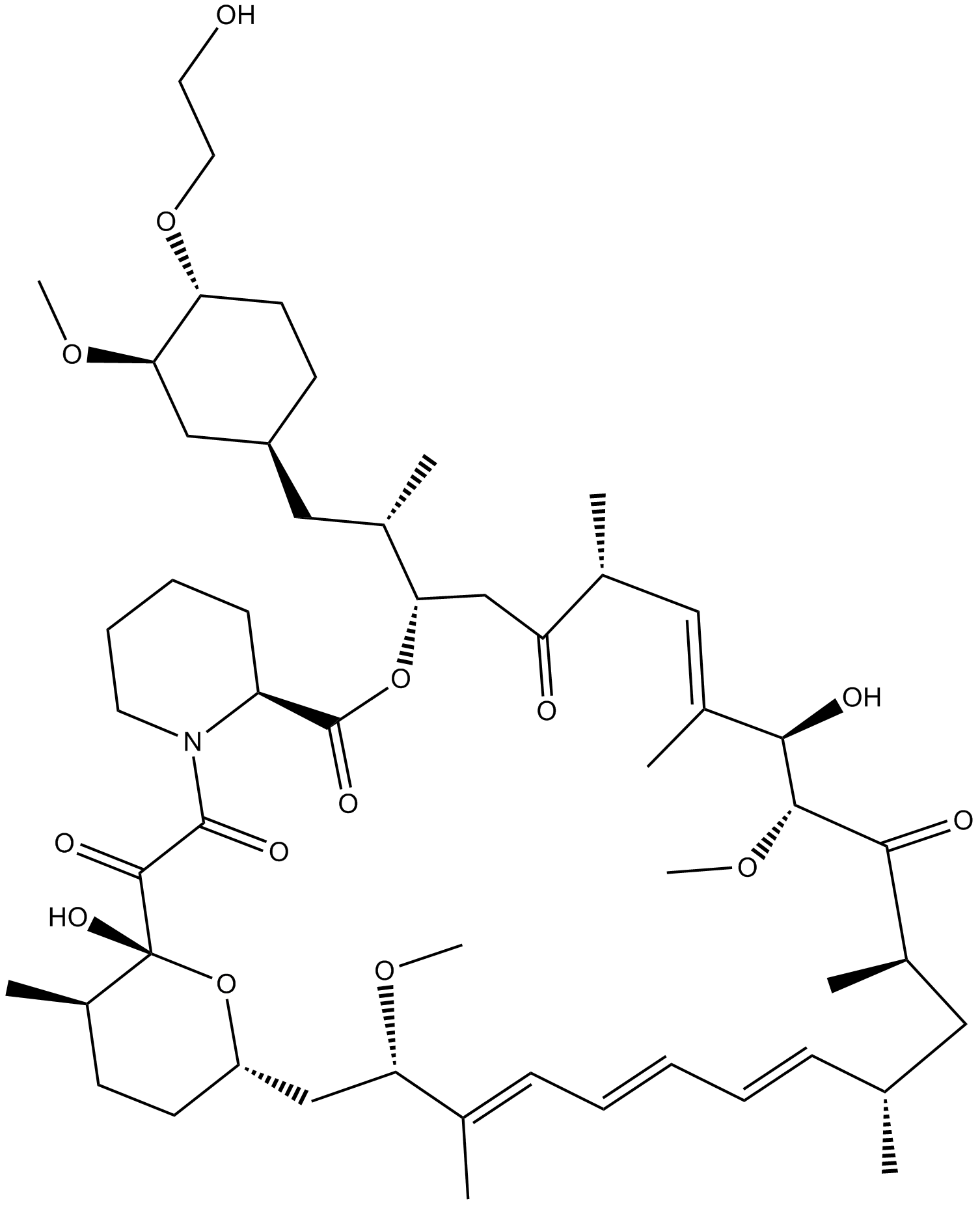
-
GC15605
Ezetimibe
Ezetimib (SCH 58235) ist ein starker Hemmer der Cholesterinabsorption.
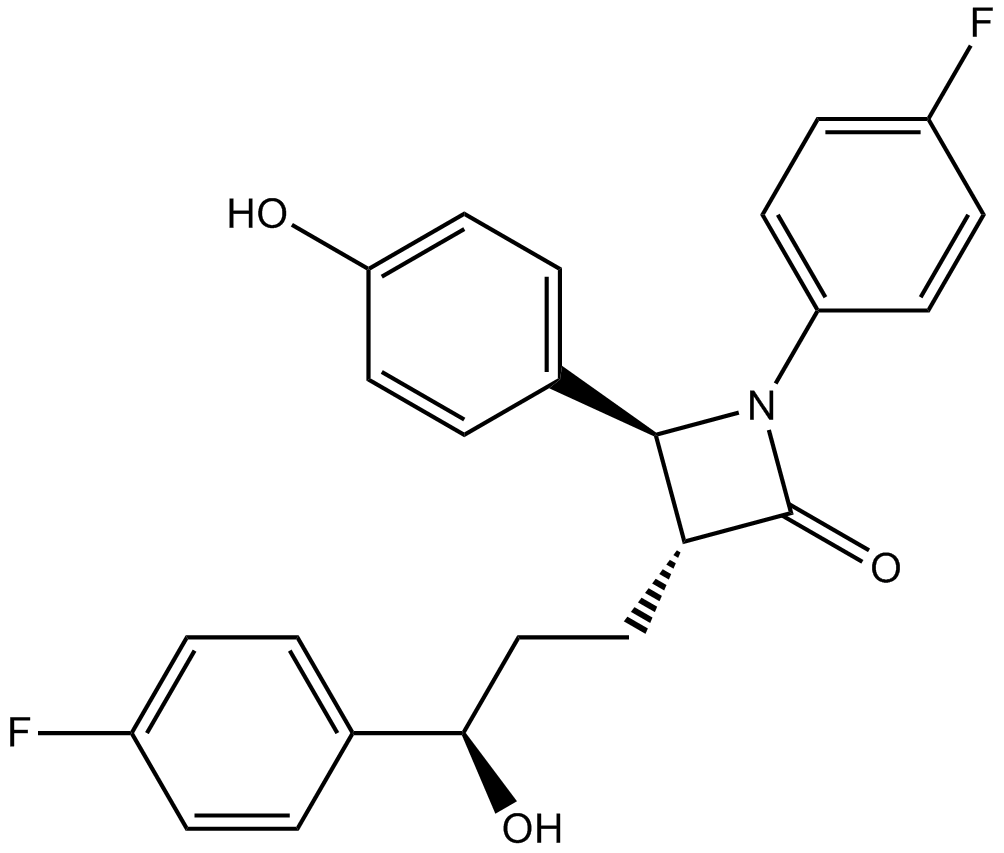
-
GC60159
Ezetimibe ketone
Ezetimib-Keton (EZM-K) ist ein Phase-I-Metabolit von Ezetimib.
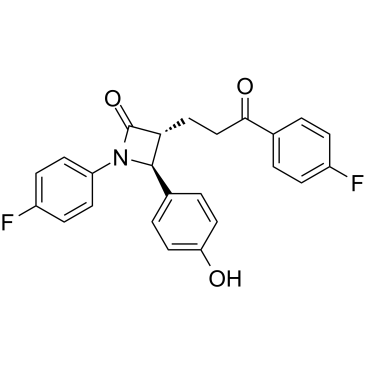
-
GC66354
Ezetimibe-d4-1
Ezetimib-d4 ist Deuterium mit der Bezeichnung Ezetimib. Ezetimib (SCH 58235) ist ein starker Hemmer der Cholesterinabsorption. Ezetimib ist ein C1-like1 (NPC1L1)-Hemmer von Niemann-Pick und ein starker Nrf2-Aktivator.
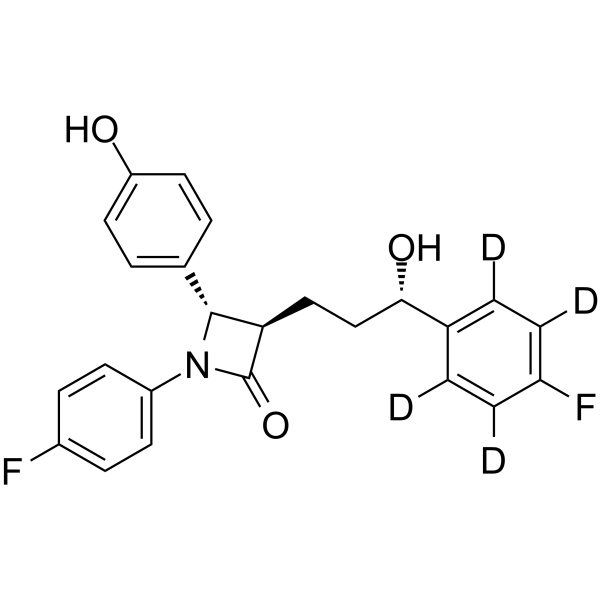
-
GC14791
F16
F16 ist ein potenter Wachstumsinhibitor der neu-Überexprimierenden Zellen und hemmt auch selektiv die Proliferation von Brustepithel sowie einer Vielzahl von Maus-Brusttumor- und menschlichen Brustkrebs-Zelllinien.
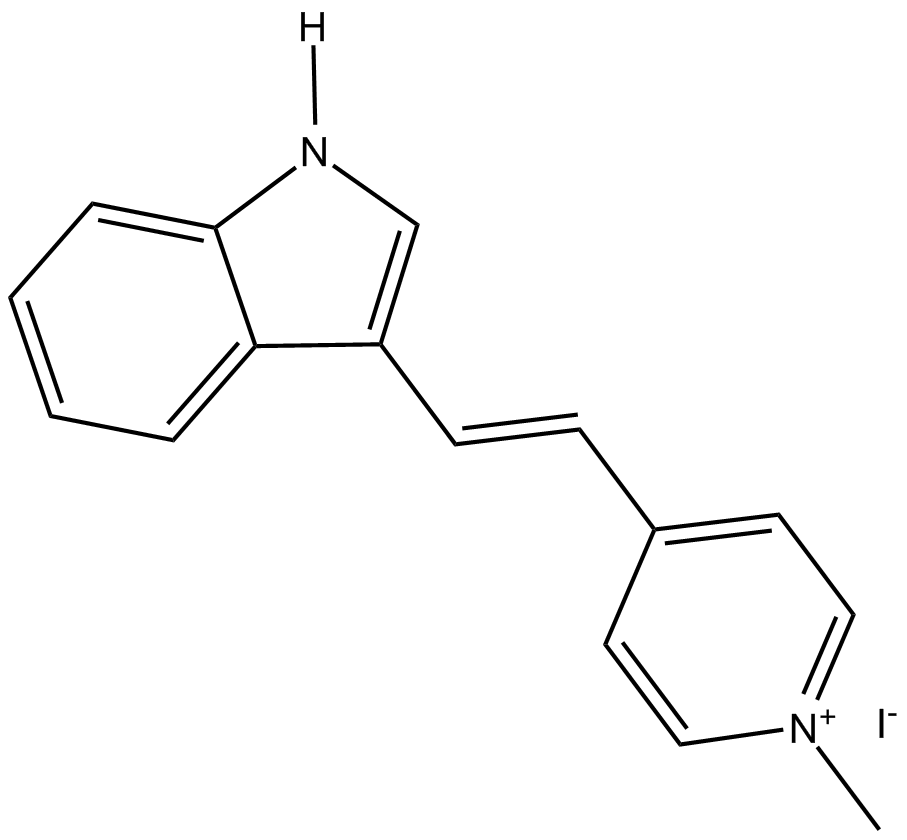
-
GC62203
Falcarindiol
Falcarindiol, ein oral wirksames polyacetylenisches Oxylipin, aktiviert PPARγ und erhÖht die Expression des Cholesterintransporters ABCA1 in Zellen.
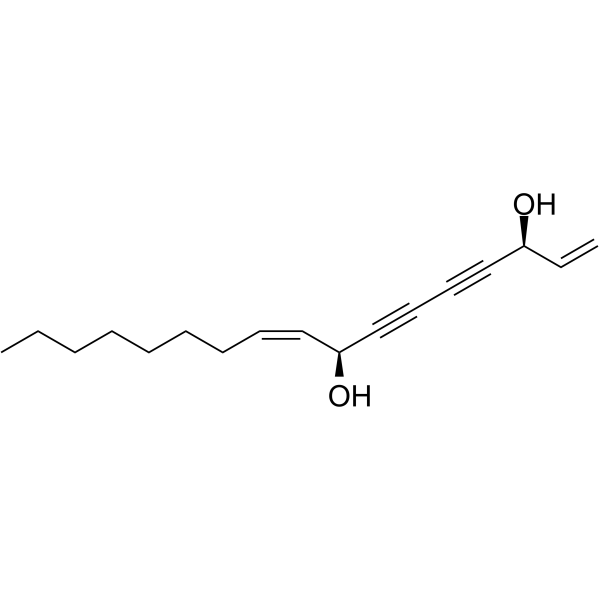
-
GC38437
Fangchinoline
An alkaloid with diverse biological activities
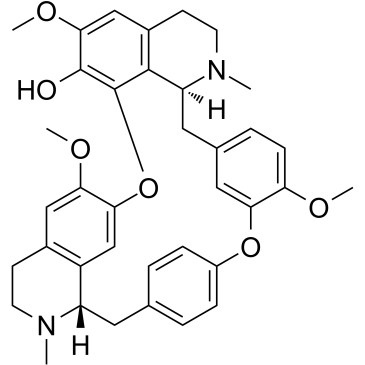
-
GC60836
Fenobucarb
Fenobucarb ist ein Carbamat-Insektizid.
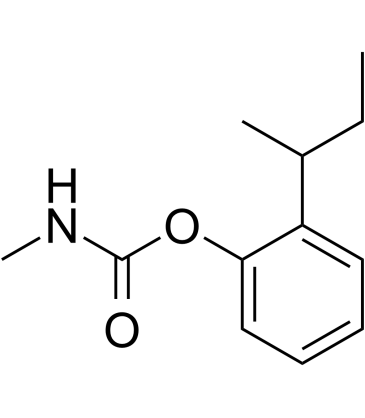
-
GC14499
Fenoprofen calcium hydrate
Fenoprofen Calciumhydrat ist ein nichtsteroidales, entzÜndungshemmendes Antiarthritikum.
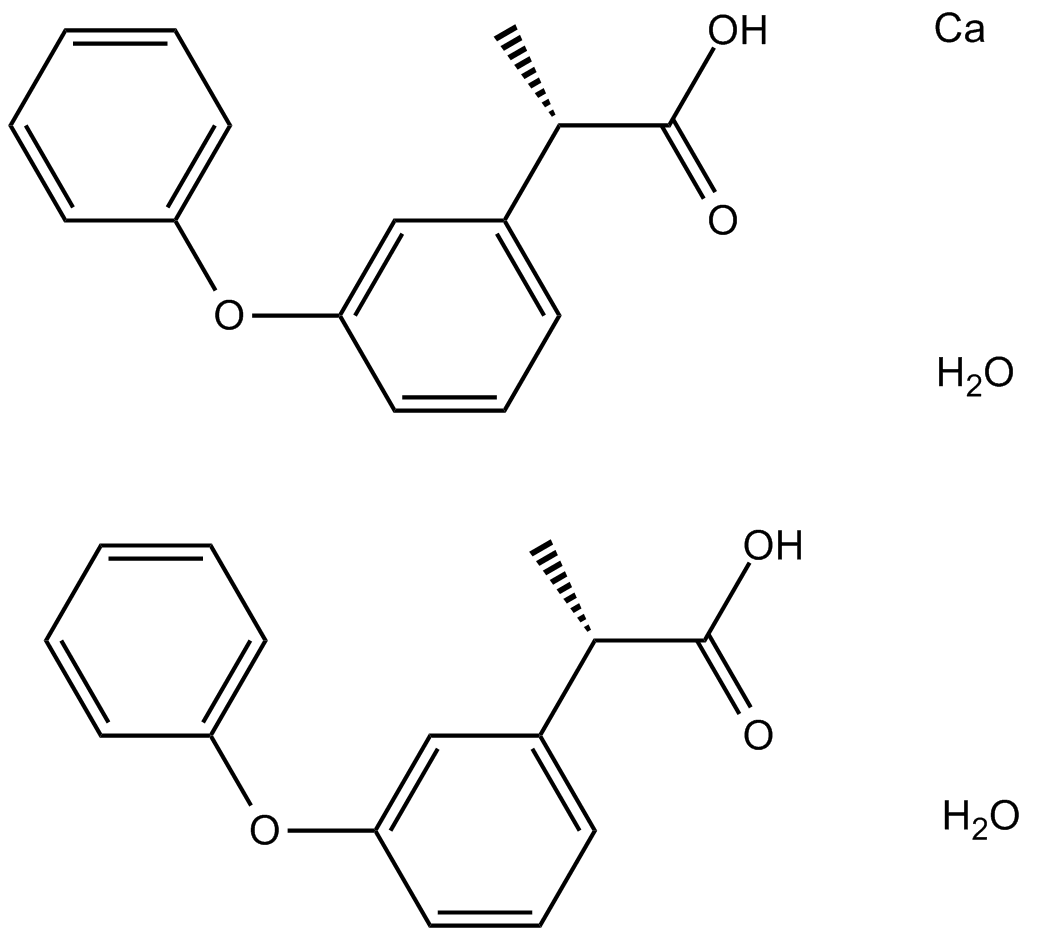
-
GC18641
Ferutinin
Ferutinin, eine natÜrliche Terpenoidverbindung, ist ein Östrogenrezeptor-ERα-Agonist und ein Östrogen-ERβ-Rezeptoragonist/-antagonist mit IC50-Werten von 33,1 nM bzw. 180,5 nM.
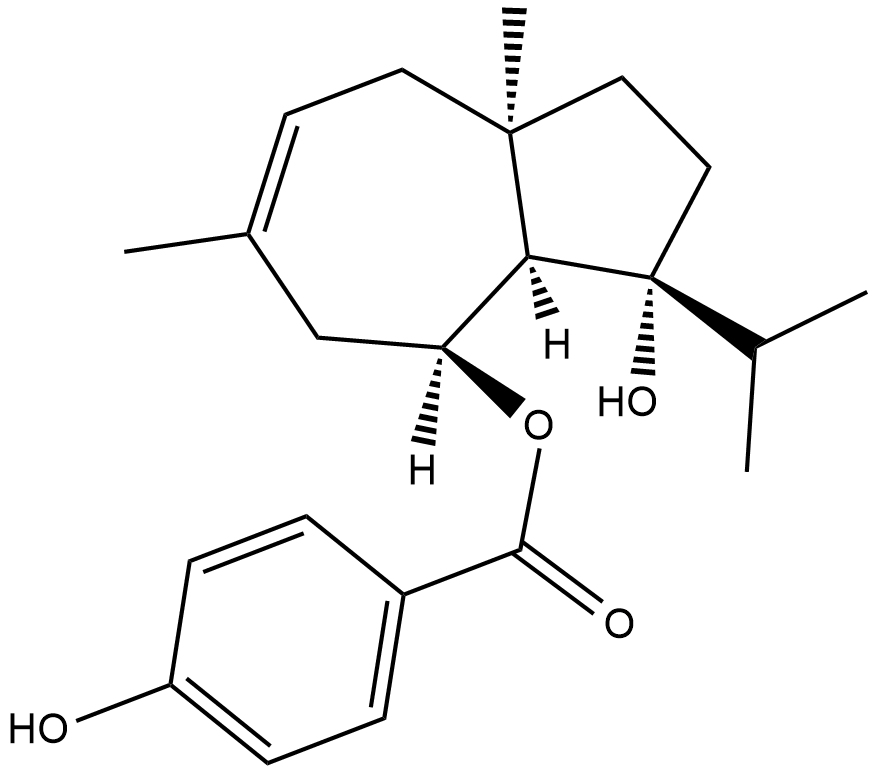
-
GC12940
Fidaxomicin
Fidaxomicin (OPT-80), ein makrozyklisches Antibiotikum, ist ein oral aktiver und potenter RNA-Polymerase-Inhibitor.
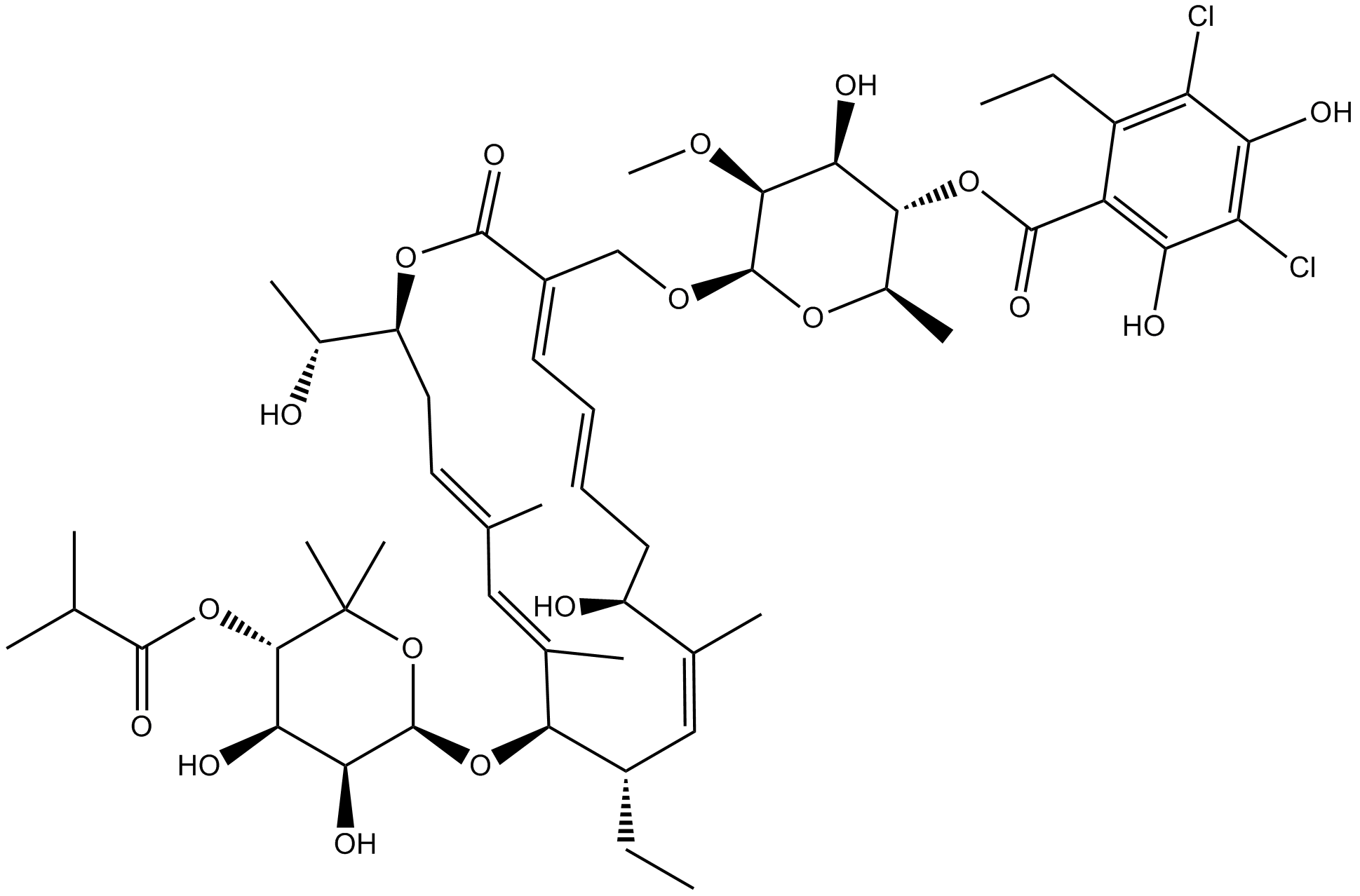
-
GC36046
Fimasartan
Fimasartan (BR-A-657) ist ein nicht-peptidischer Angiotensin-II-Rezeptorantagonist, der zur Behandlung von Bluthochdruck und Herzinsuffizienz eingesetzt wird.
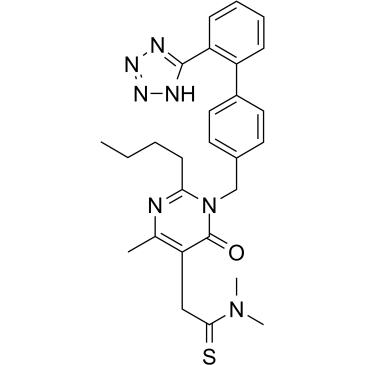
-
GN10030
Fisetin
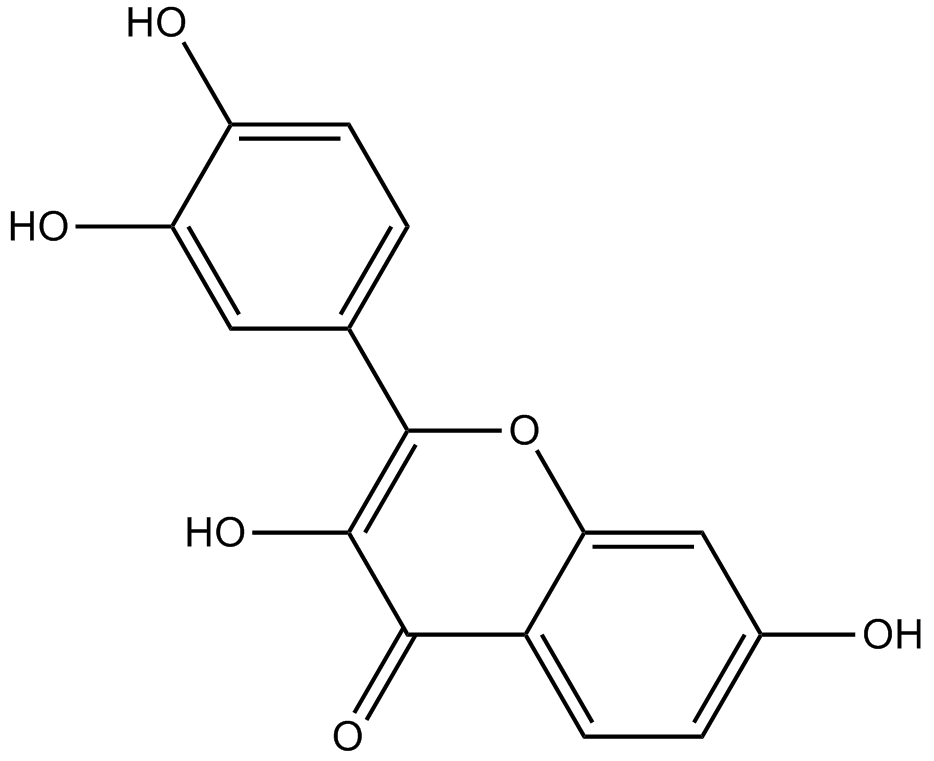
-
GC49344
Fisetin-d5
An internal standard for the quantification of fisetin

-
GC60845
Flavokawain A
Flavokawain A, ein vielversprechender antikarzinogener Wirkstoff, ist ein Chalcon aus Kava-Extrakt mit AntitumoraktivitÄt. Flavokawain A induziert Zellapoptose durch Beteiligung des Bax-Protein-abhÄngigen und Mitochondrien-abhÄngigen Apoptosewegs. Flavokawain A hat das Potenzial fÜr die Untersuchung von Blasenkrebs.
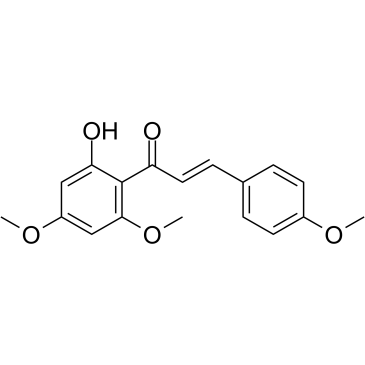
-
GC41261
Flavokawain B
Flavokawain B (Flavokavain B) ist ein aus den Wurzelextrakten der Kava-Kava-Pflanze isoliertes Chalcon und ein starker Apoptoseinduktor zur Hemmung des Wachstums verschiedener Krebszelllinien. Flavokawain B (Flavokavain B) zeigt eine starke antiangiogene AktivitÄt. Flavokawain B (Flavokavain B) hemmt die Migration von Endothelzellen des menschlichen Gehirns (HUVEC) und die Bildung von RÖhren mit sehr niedrigen und nicht toxischen Konzentrationen.

-
GC36050
Flavokawain C
Flavokawain C ist ein natÜrlicher Chalkone, der in der Kava-Wurzel vorkommt. Flavokawain C Übt ZytotoxizitÄt gegen menschliche Krebszelllinien aus, mit einem IC50-Wert von 12,75 μM fÜr HCT-116-Zellen.
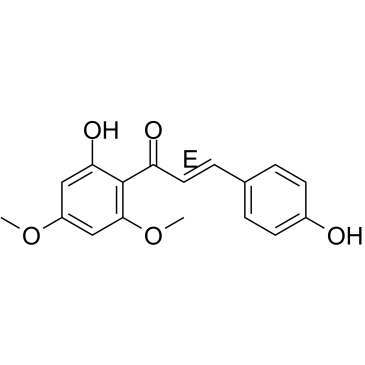
-
GC16875
FLLL32
FLLL32, ein synthetisches Analogon von Curcumina, ist ein dualer JAK2/STAT3-Inhibitor mit AntitumoraktivitÄt. FLLL32 kann die Induktion der STAT3-Phosphorylierung durch IFNα und IL-6 in Brustkrebszellen hemmen.
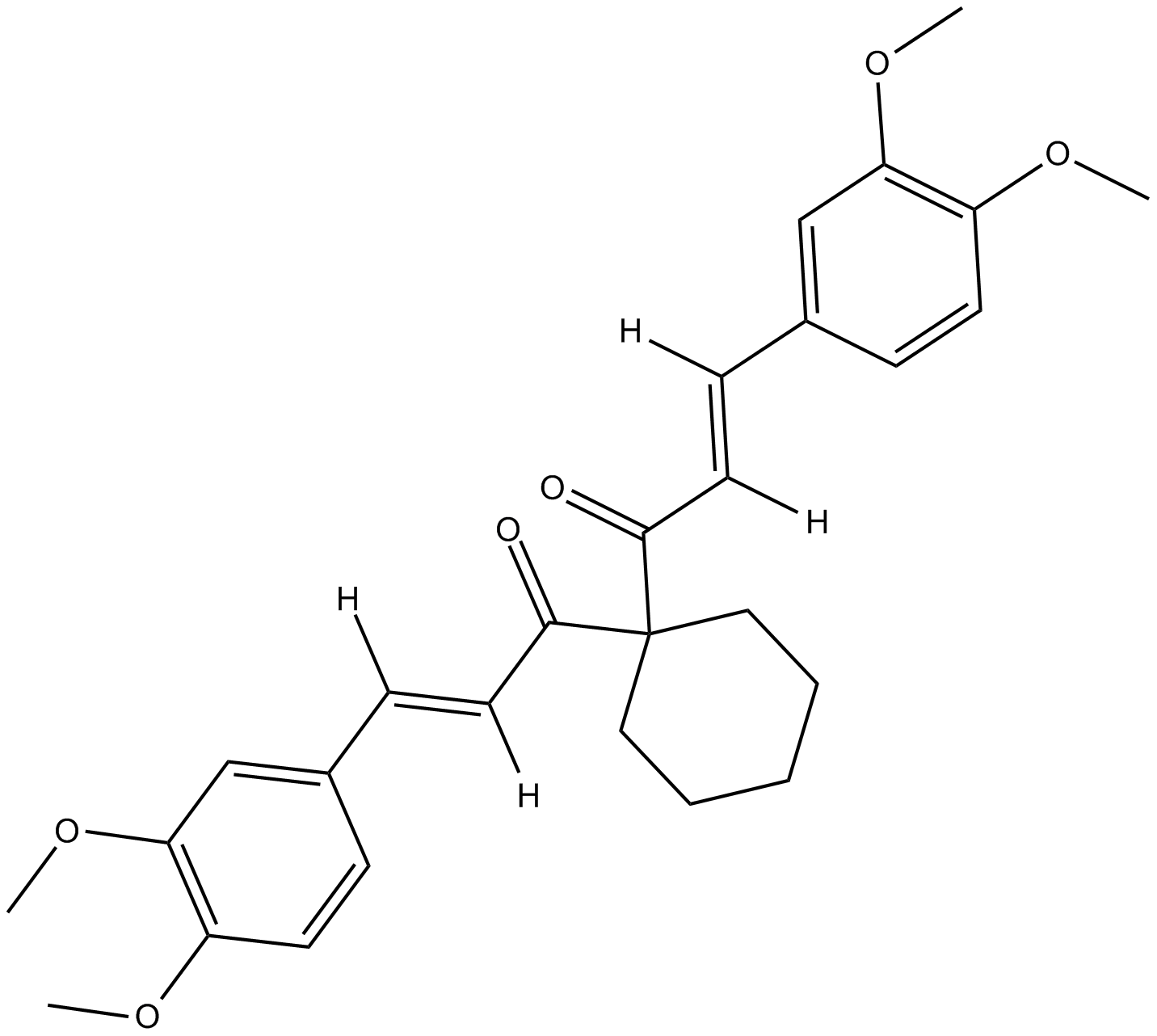
-
GC13210
Flubendazole
Flubendazol ist ein sicheres und wirksames Anthelminthikum, das weithin als Anthelminthikum fÜr Menschen, Nagetiere und WiederkÄuer verwendet wird.
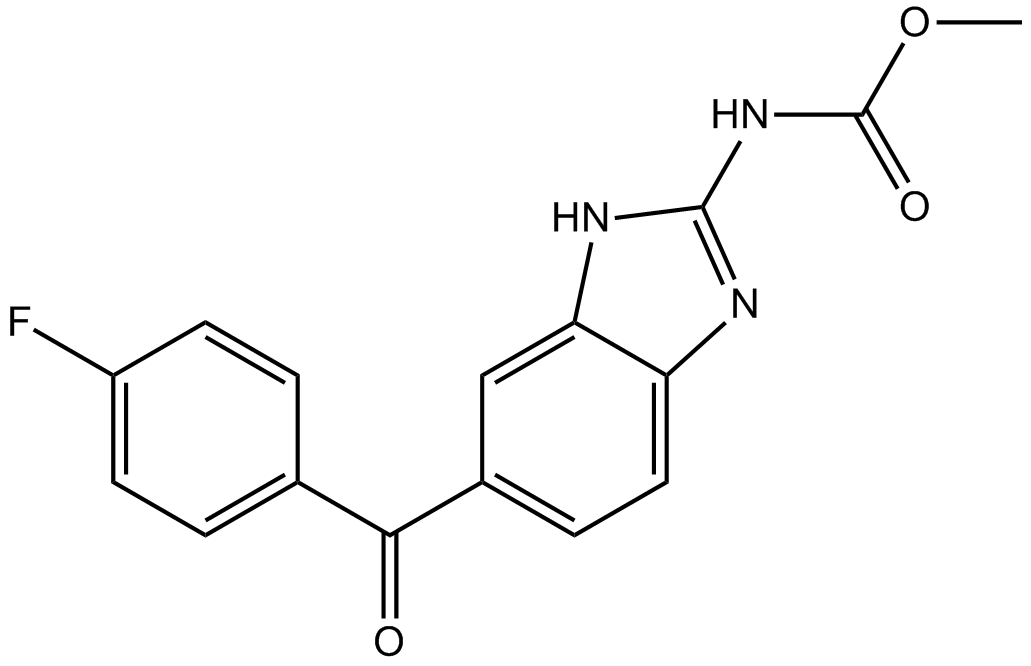
-
GC14144
Fludarabine
Fludarabin (NSC 118218) ist ein Inhibitor der DNA-Synthese und ein fluoriertes Purin-Analogon mit antineoplastischer AktivitÄt bei malignen lymphoproliferativen Erkrankungen. Fludarabin hemmt die Zytokin-induzierte Aktivierung von STAT1 und die STAT1-abhÄngige Gentranskription in normalen ruhenden oder aktivierten Lymphozyten.
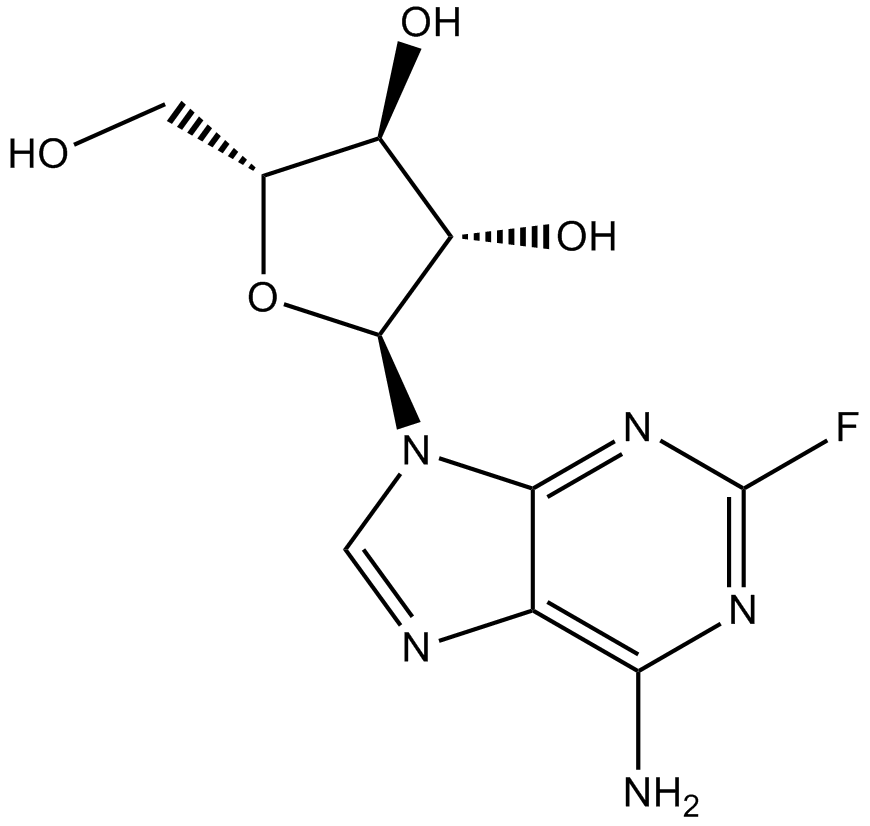
-
GC15134
Fludarabine Phosphate (Fludara)
Fludarabin (Phosphat) ist ein Analogon von Adenosin und Desoxyadenosin, das mit dATP um den Einbau in die DNA konkurrieren und die DNA-Synthese hemmen kann.
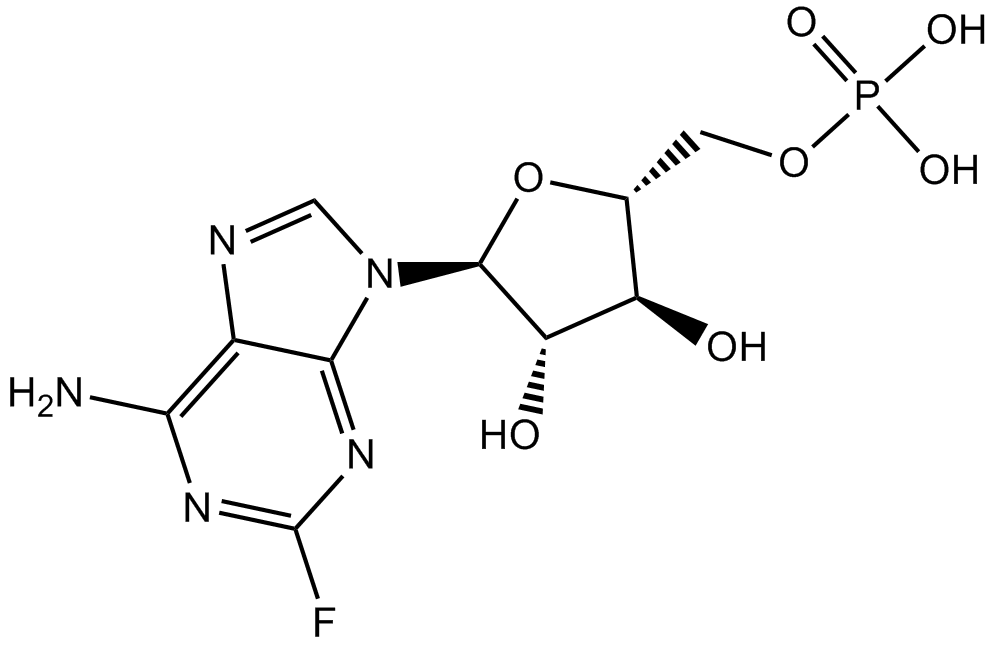
-
GC48827
Flufenamic Acid-d4
An internal standard for the quantification of flufenamic acid

-
GC62167
Fluorizoline
Fluorizolin bindet selektiv und direkt an Prohibitin 1 (PHB1) und 2 (PHB2) und induziert Apoptose. Fluorizolin reduziert die LebensfÄhigkeit von Zellen der chronischen lymphatischen LeukÄmie (CLL) durch die Hochregulierung von NOXA und BIM. Fluorizolin Übt eine Antitumorwirkung auf p53-unabhÄngige Weise aus.
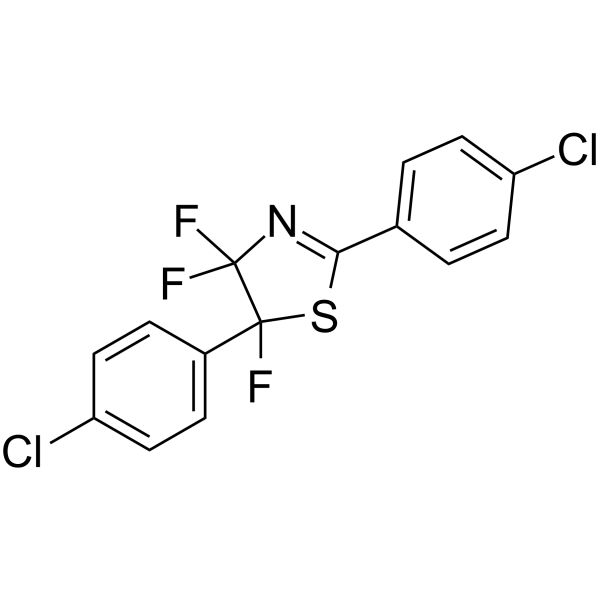
-
GC43689
Fluphenazine-N-2-chloroethane (hydrochloride)
Fluphenazine is a traditional antipsychotic compound that tightly binds the dopamine D2 receptor (Ki = 0.55 nM) and also reversibly inhibits calmodulin at micromolar concentrations.

-
GC16880
Flurbiprofen
Flurbiprofen (dl-Flurbiprofen) ist ein starker, oral wirksamer, nichtsteroidaler EntzÜndungshemmer (NSAIA/NSAID) mit fiebersenkender und analgetischer Wirkung.
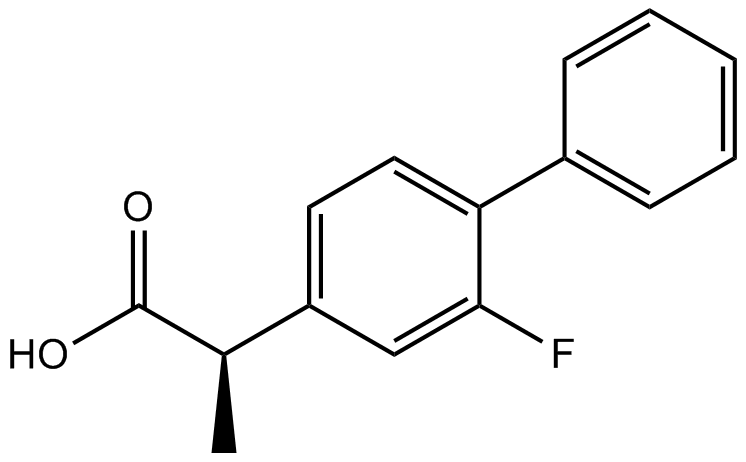
-
GC48831
Flutamide-d7
Flutamid-d7 ist mit Deuterium bezeichnetes Flutamid.

-
GC49126
Folitixorin
Folitixorin (5,10-Methylentetrahydrofolat) ist ein Cofaktor und ein Analogon von Leucovorin. Folitixorin ist ein vielversprechender Wirkstoff zur Modulation der 5-FU-ZytotoxizitÄt in der adjuvanten Krebsforschung.

-
GN10527
Formononetin
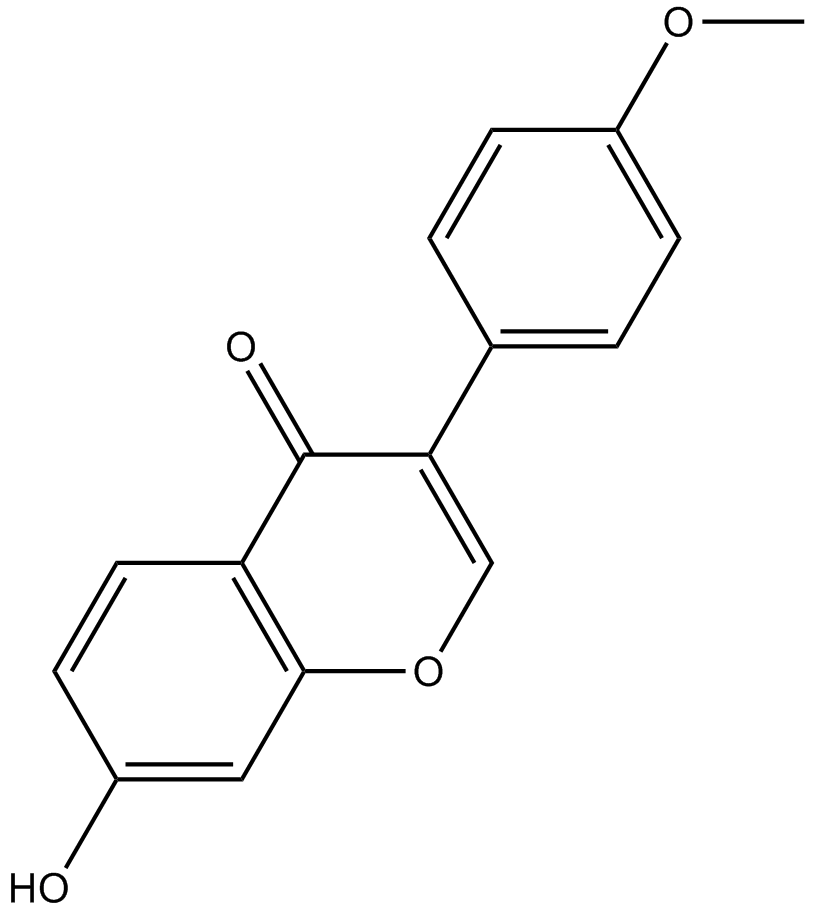
-
GC36065
Formosanin C
Formosanin C ist ein aus Pariser Formosana Hayata isoliertes Diosgenin-Saponin und ein Immunmodulator mit AntitumoraktivitÄt. Formosanin C induziert Apoptose.
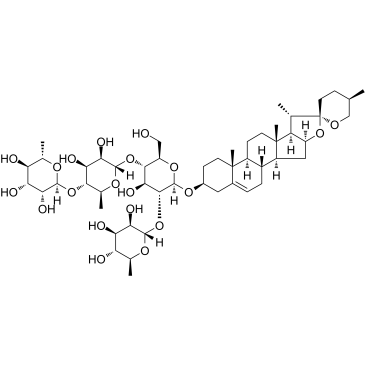
-
GC33029
Forodesine (BCX-1777 freebase)
Forodesin (BCX-1777 Freebase) (BCX-1777) ist ein hochwirksamer und oral aktiver Purinnukleosid-Phosphorylase (PNP)-Inhibitor mit IC50-Werten im Bereich von 0,48 bis 1,57 nM fÜr PNP von Mensch, Maus, Ratte, Affe und Hund. Forodesin (BCX-1777 Freebase) ist ein starker Inhibitor der menschlichen Lymphozytenproliferation. Forodesin (BCX-1777 Freebase) kÖnnte Apoptose in LeukÄmiezellen induzieren, indem es die dGTP-Spiegel erhÖht.
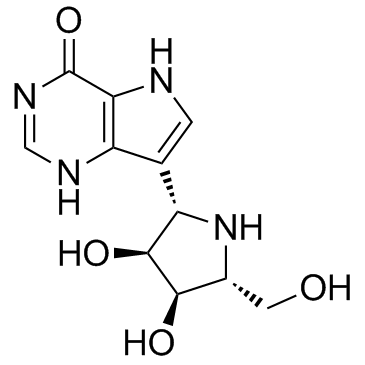
-
GC32708
Forodesine hydrochloride (BCX-1777)
Forodesin-Hydrochlorid (BCX-1777) (BCX-1777-Hydrochlorid) ist ein hochwirksamer und oral aktiver Purinnukleosid-Phosphorylase (PNP)-Inhibitor mit IC50-Werten im Bereich von 0,48 bis 1,57 nM fÜr PNP von Mensch, Maus, Ratte, Affe und Hund. Forodesinhydrochlorid (BCX-1777) ist ein potenter Inhibitor der menschlichen Lymphozytenproliferation. Forodesinhydrochlorid (BCX-1777) kÖnnte Apoptose in LeukÄmiezellen induzieren, indem es die dGTP-Spiegel erhÖht.
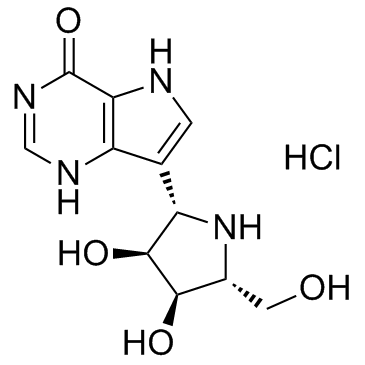
-
GN10727
Forsythoside B
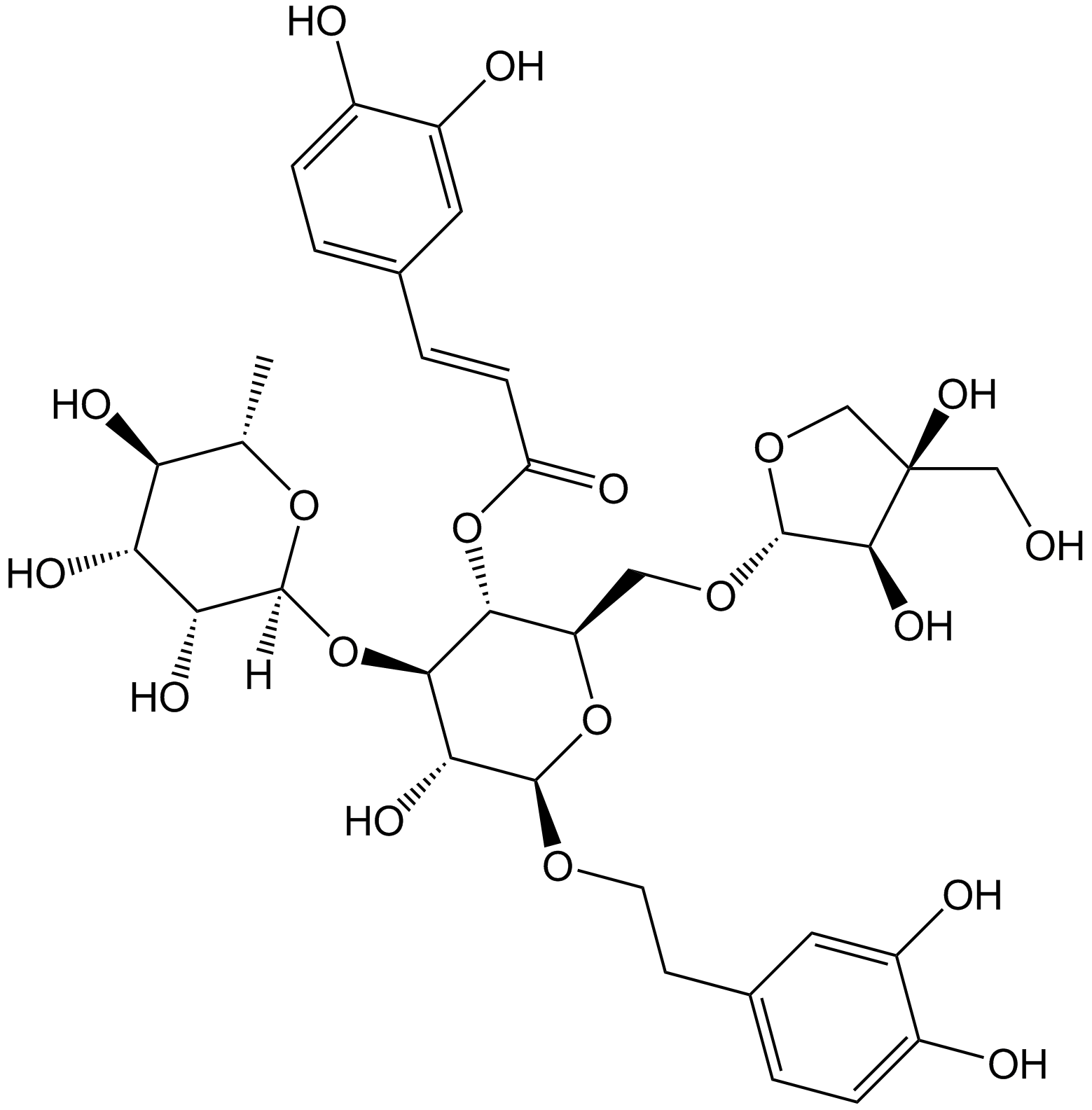
-
GC12308
Fosbretabulin (Combretastatin A4 Phosphate (CA4P)) Disodium
Fosbretabulin (Combretastatin A4 Phosphat (CA4P)) Dinatrium (CA 4DP) ist ein Tubulin destabilisierendes Mittel. Fosbretabulin (Combretastatin A4 Phosphat (CA4P)) Dinatrium ist das Combretastatin A4 Prodrug, das selektiv auf Endothelzellen abzielt, die Regression von neu entstehenden TumorgefÄßen induziert, den Blutfluss des Tumors reduziert und eine zentrale Tumornekrose verursacht.
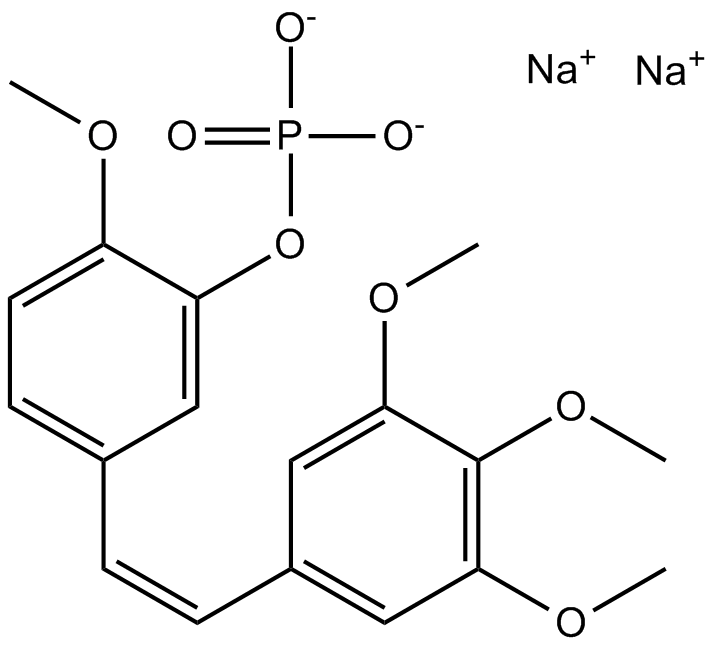
-
GC25428
Foscenvivint (ICG-001)
Foscenvivint (ICG-001) antagonizes Wnt/β-catenin/TCF-mediated transcription and specifically binds to CREB-binding protein (CBP) with IC50 of 3 μM, but is not the related transcriptional coactivator p300. ICG-001 induces apoptosis.

-
GC62645
Fosifloxuridine nafalbenamide
Fosifloxuridinnafalbenamid (NUC-3373), ein Pyrimidin-Nukleotid-Analogon, ist ein Thymidylat-Synthase-Hemmer. Fosifloxuridinnafalbenamid hat AntikrebsaktivitÄt. Fosifloxuridinnafalbenamid hat das Potenzial, eine Immunantwort des Wirts hervorzurufen und die Immuntherapie zu verbessern.
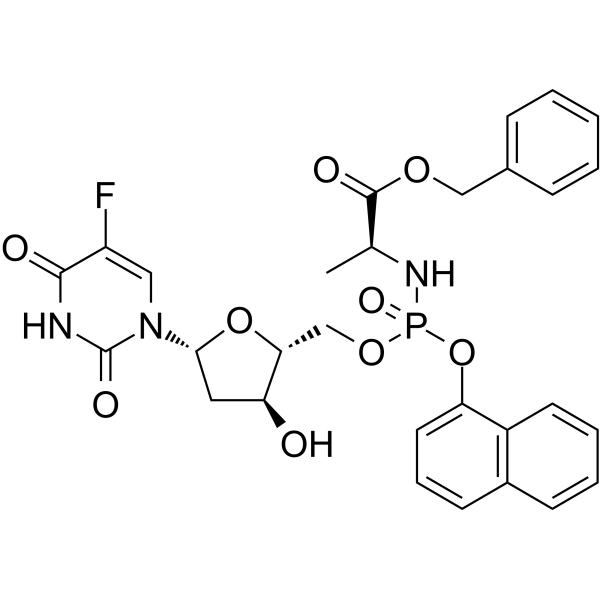
-
GC38551
FPA-124
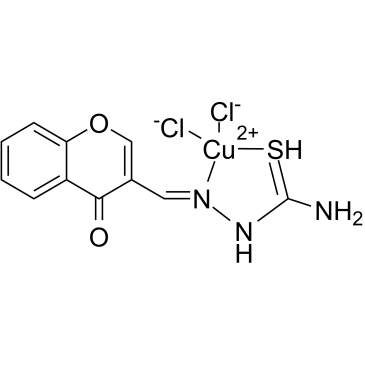
-
GC18652
FQI 1
An inhibitor of Late SV40 Factor
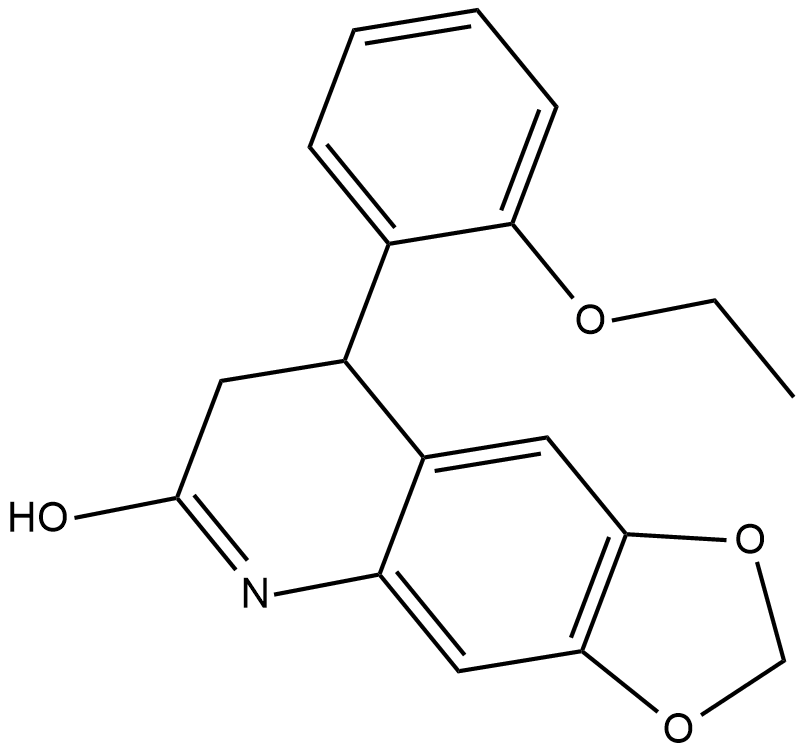
-
GC10647
FR 180204
FR 180204 ist ein ATP-kompetitiver und selektiver ERK-Inhibitor. FR 180204 hemmt ERK1 und ERK2 mit IC50-Werten von 0,51 μM (Ki=0,31 μM) bzw. 0,33 μM (Ki=0,14 μM).
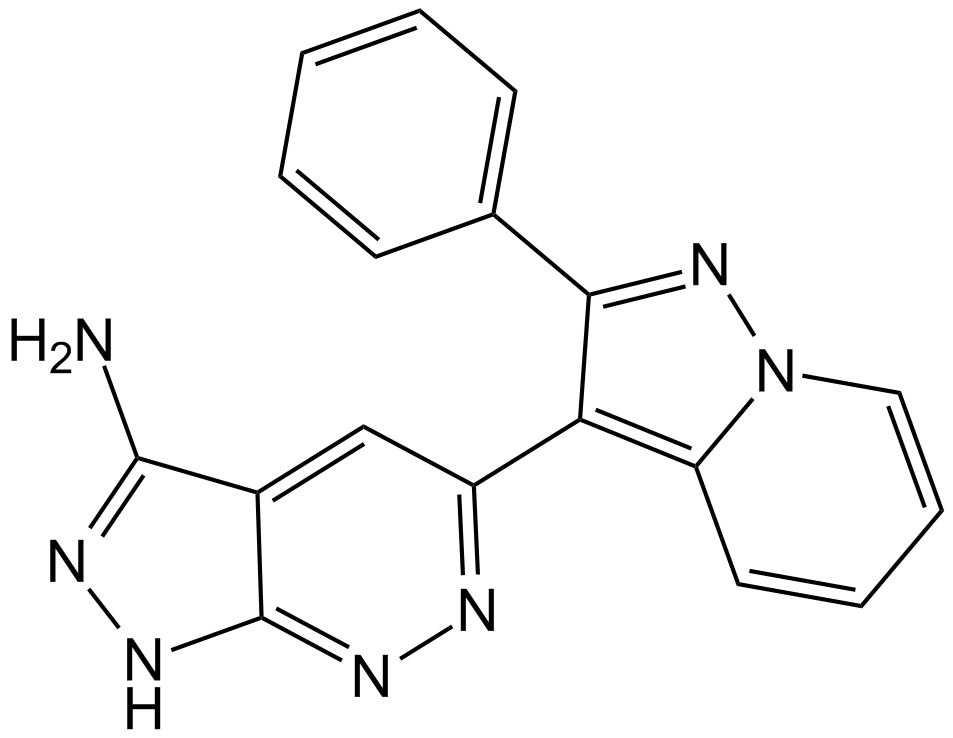
-
GC38044
Fraxinellone
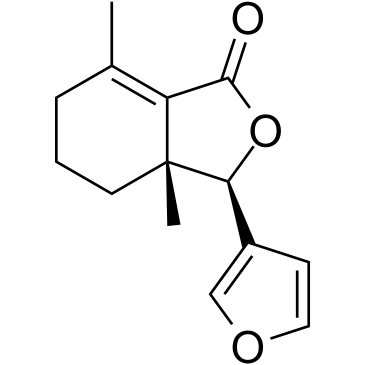
-
GC16310
FTI 277 HCl
FTI 277 HCl ist ein Inhibitor der Farnesyltransferase (FTase); ein hochpotentes Ras-CAAX-Peptidomimetikum, das sowohl die onkogene H- als auch die K-Ras-Signalgebung antagonisiert.
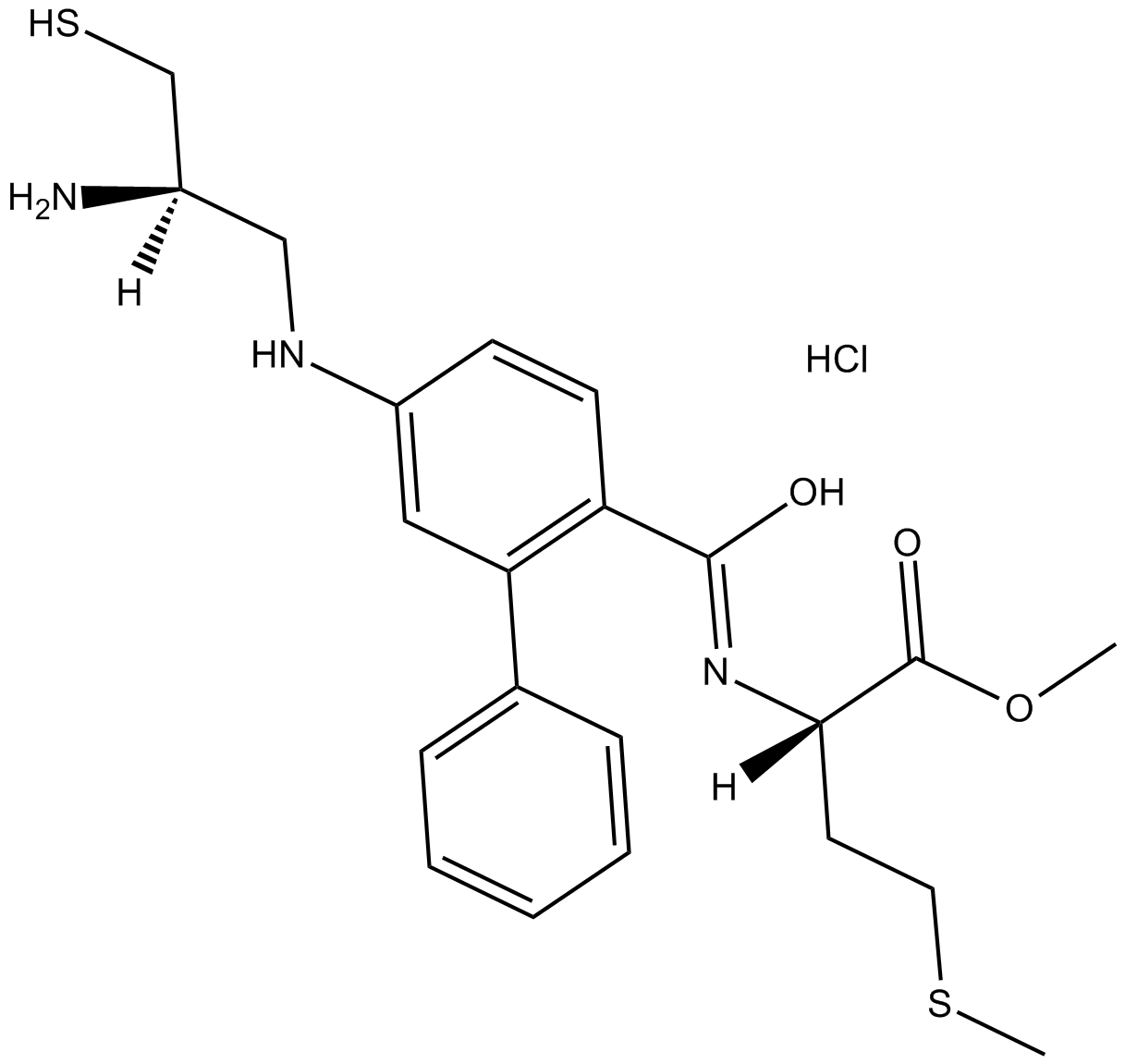
-
GC52288
Fumonisin B1-13C34
An internal standard for the quantification of fumonisin B1

-
GC62981
Furanodienone
Furanodienon ist einer der wichtigsten bioaktiven Bestandteile, die aus Rhizoma Curcumae gewonnen werden. Furanodienon induzierte Apoptose.
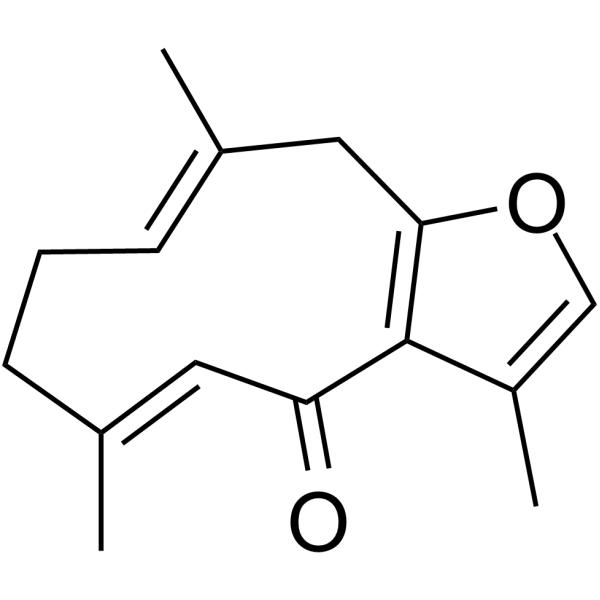
-
GC32138
Furazolidone
Furazolidon ist ein Nitrofuran-Derivat mit antiprotozoaler und antibakterieller AktivitÄt, hemmt AML1-ETO-transformierte Zellen mit einem IC50-Wert von 12,7 μM.
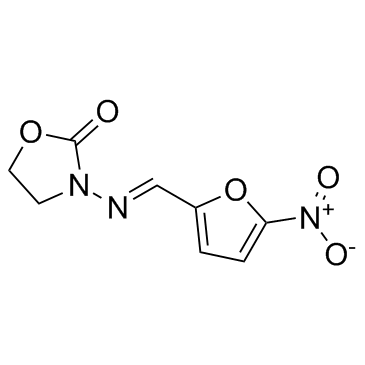
-
GC18611
Fusicoccin
Fusicoccin (Fusicoccin A), ein Pilz-Pytotoxin, ist ein Stabilisator spezifischer 14-3-3-Protein-Protein-Wechselwirkungen. Fusicoccin sabilisiert H+-ATPase/14-3-3-cmplex in Hosen und hÄlt das Enzym in aktiviertem Zustand. Fusicoccin stabilisiert auch 14-3-3-Proteinwechselwirkungen mit Bindungspartnern, die ein C-terminales 14-3-3-Erkennungsmotiv (ein Modus-3-Motiv) enthalten, wie ERα, GPIbα, TASK3, CTFR und p53. Fusicoccin induziert Apoptose in Krebszellen und wirkt gegen Krebs.
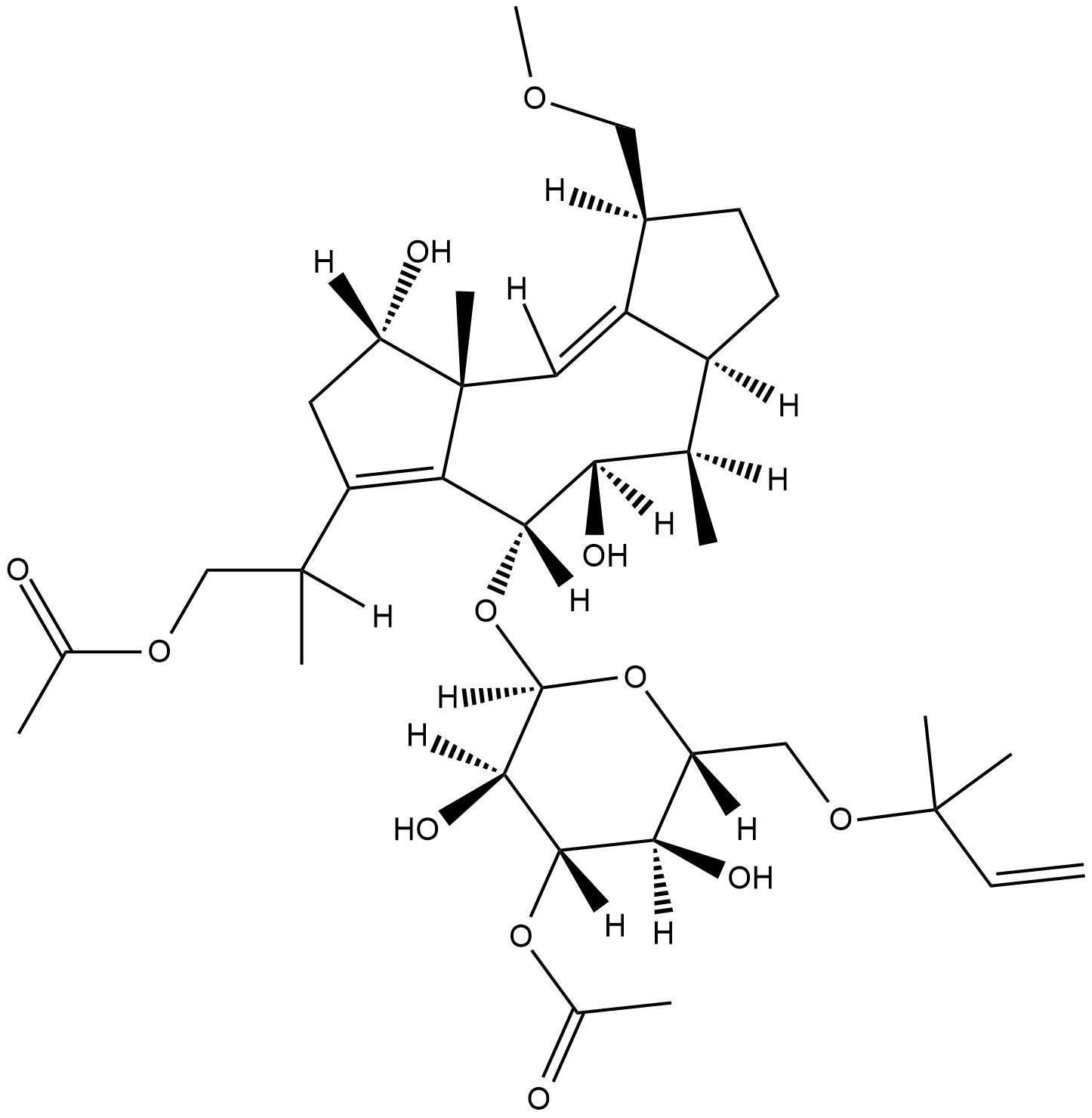
-
GC39382
FW1256
FW1256 ist ein Phenylanalogon und ein langsam freisetzender Schwefelwasserstoff (H2S)-Donor.
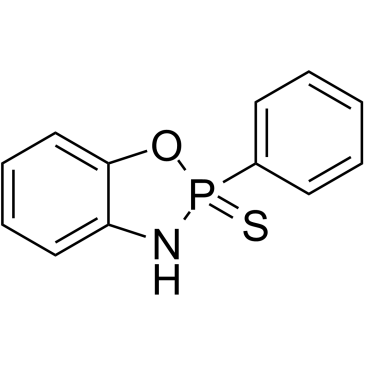
-
GC12178
G-749
G-749 ist ein potenter, oral aktiver und ATP-kompetitiver FLT3-Inhibitor mit IC50-Werten von 0,4 nM und 0,6 nM fÜr FLT3-Wildtyp bzw. FLT3-D835Y. G-749 kann fÜr die Erforschung von Arzneimittelresistenzen bei akuter myeloischer LeukÄmie (AML) verwendet werden.
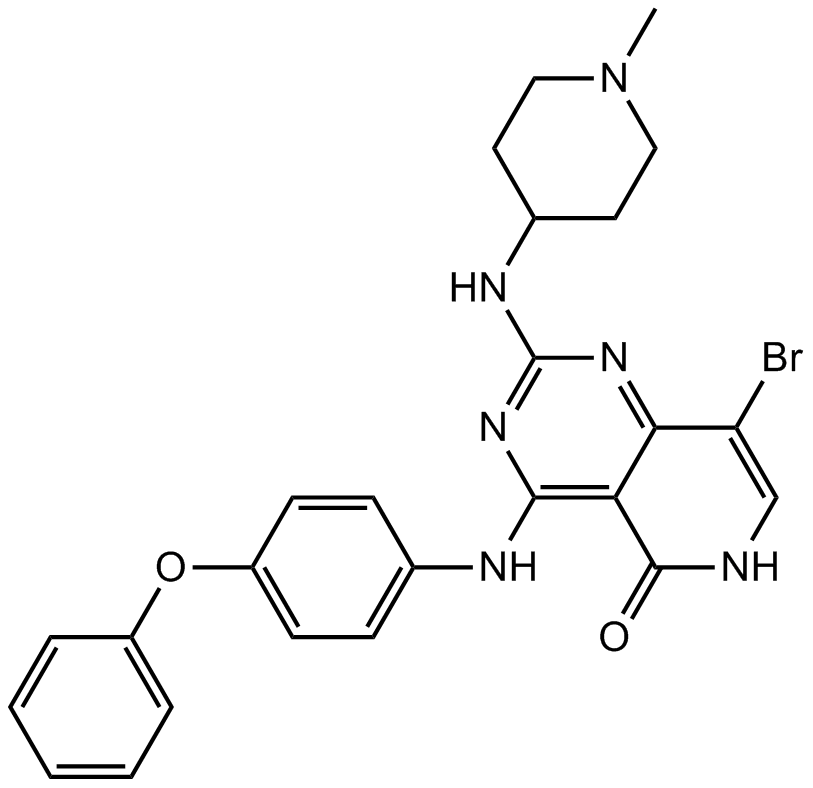
-
GC62246
G5-7
G5-7, ein oral aktiver und allosterischer JAK2-Inhibitor, hemmt selektiv die JAK2-vermittelte Phosphorylierung und Aktivierung von EGFR (Tyr1068) und STAT3 durch Bindung an JAK2. G5-7 induziert Zellzyklusarrest, Apoptose und besitzt antiangiogene Wirkung. G5-7 hat das Potenzial fÜr Gliomstudien.
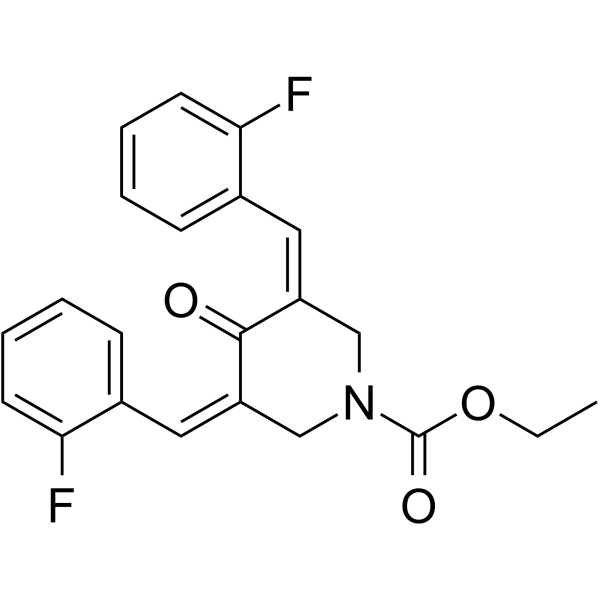
-
GC43723
Galactosylsphingosine (d18:1)
Galactosylsphingosin (d18:1) (Galactosylsphingosin), ein Substrat des Enzyms Galactocerebrosidase (GALC), ist ein potenzieller Biomarker fÜr die Krabbe-Krankheit.

-
GC36103
Galanthamine hydrobromide
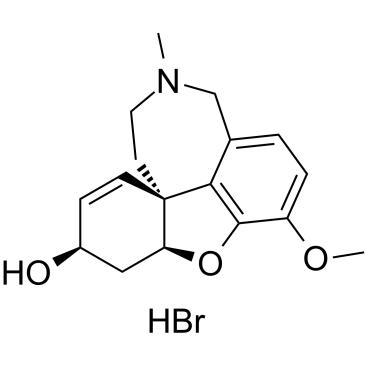
-
GC38610
Galgravin
Galgravin ist ein Wirkstoff in Nectandra megapotamica mit entzÜndungshemmender Wirkung. Galgravin zeigt in vitro zytotoxische AktivitÄt und induziert Apoptose in LeukÄmiezellen.
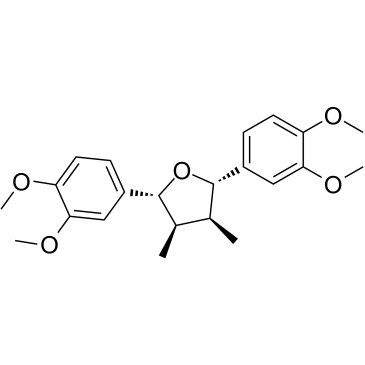
-
GN10388
Gallic acid

-
GC61436
Gallic acid hydrate
GallussÄure (3,4,5-TrihydroxybenzoesÄure)-Hydrat ist eine natÜrliche Polyhydroxyphenolverbindung und ein RadikalfÄnger zur Hemmung der Cyclooxygenase-2 (COX-2).
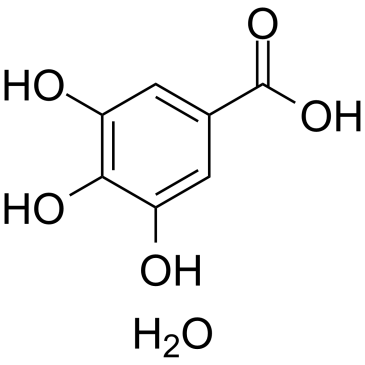
-
GC12139
Gambogic Acid
A xanthonoid with anticancer activity
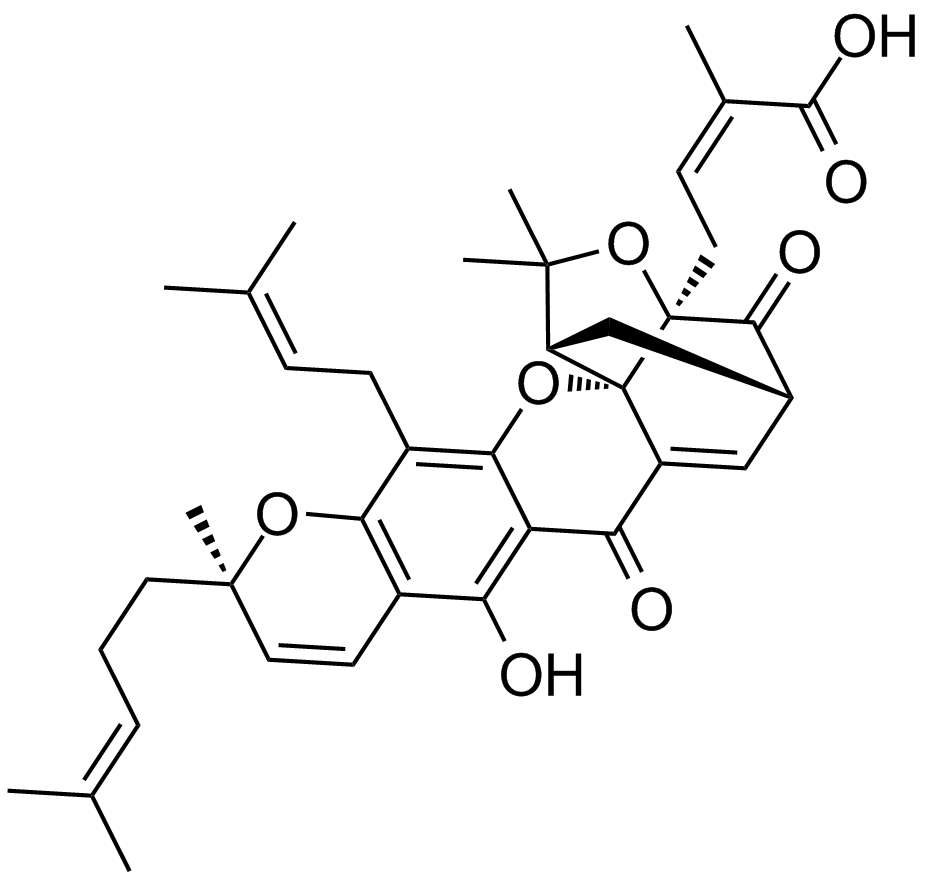
-
GC36106
Gamma-glutamylcysteine (TFA)
Gamma-Glutamylcystein (γ-Glutamylcystein) TFA, ein Zwischenprodukt der Glutathion (GSH)-Synthese, ist ein Dipeptid, das als essentieller Cofaktor für das antioxidative Enzym Glutathionperoxidase (GPx) dient.
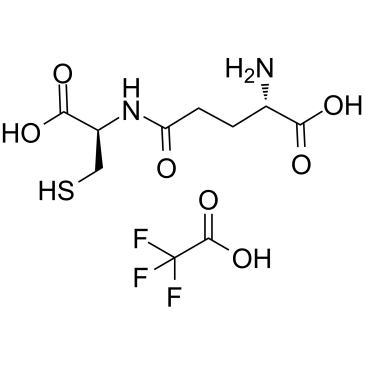
-
GC17655
Ganetespib (STA-9090)
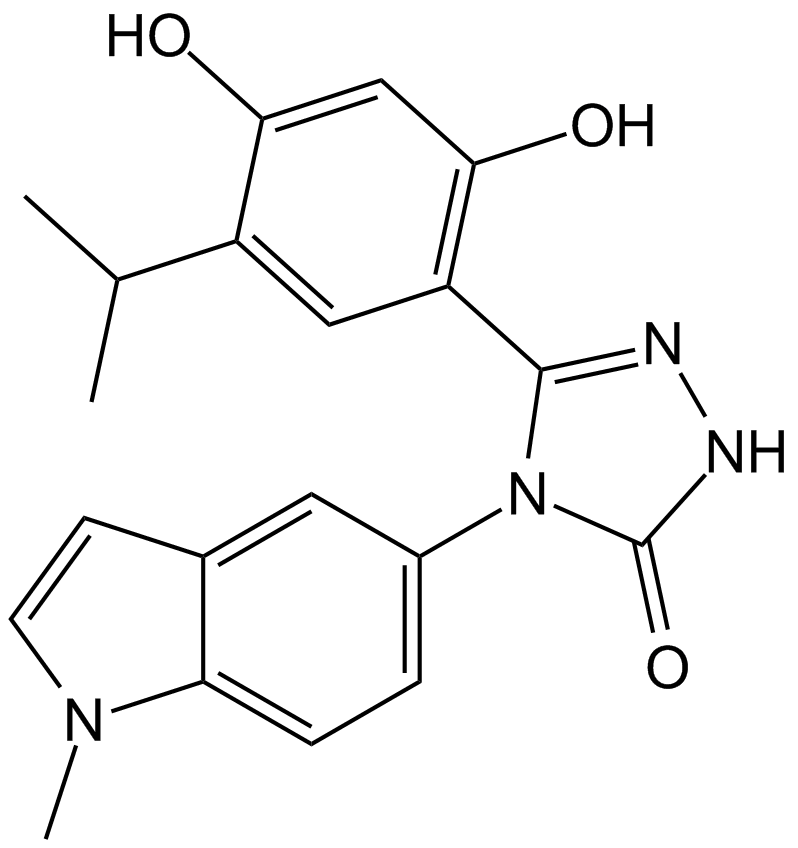
-
GC43729
Ganglioside GD3 Mixture (sodium salt)
Ganglioside GD3 is synthesized by the addition of two sialic acid residues to lactosylceramide and can serve as a precursor to the formation of more complex gangliosides by the action of glycosyl- and sialyltransferases.

-
GC47392
Ganglioside GM1 Mixture (ovine) (ammonium salt)
A mixture of ganglioside GM1



